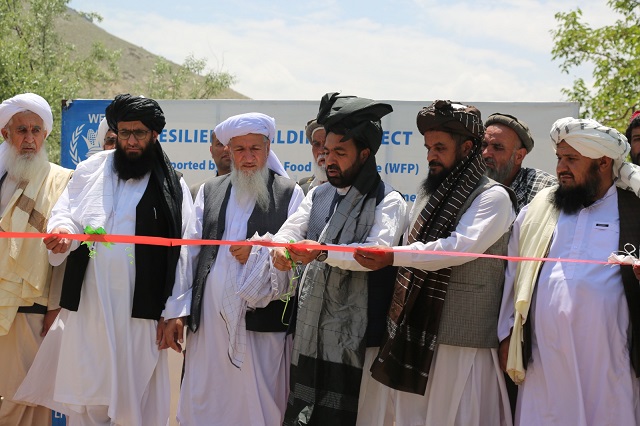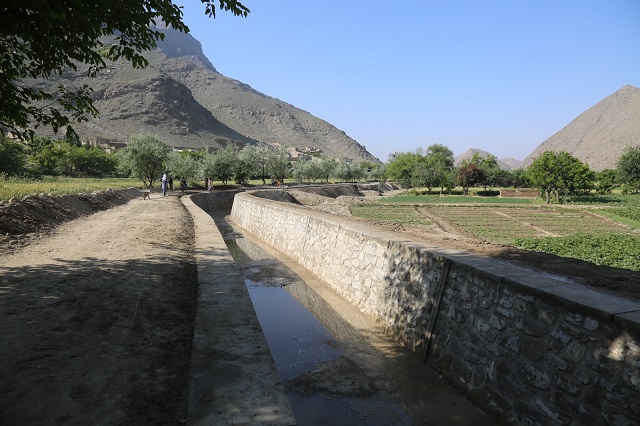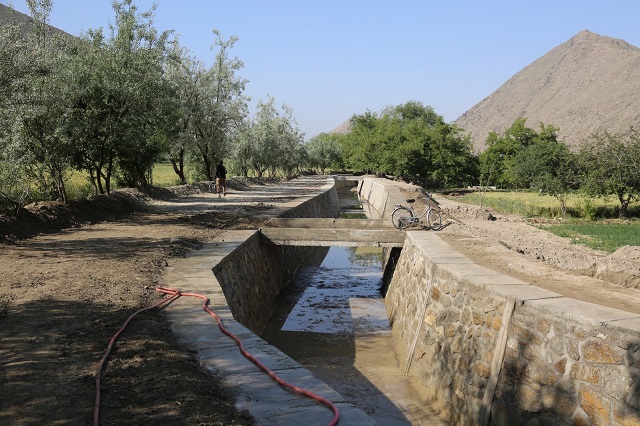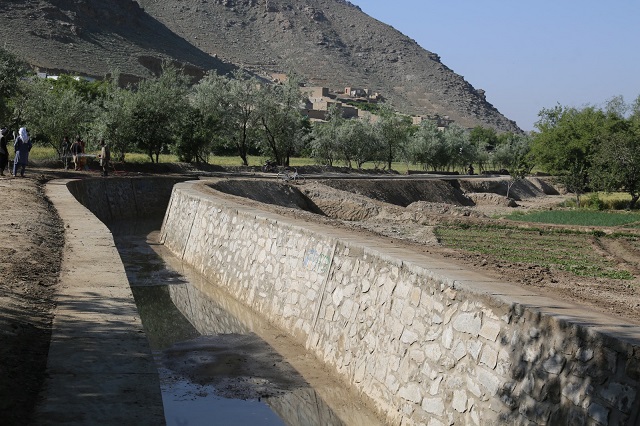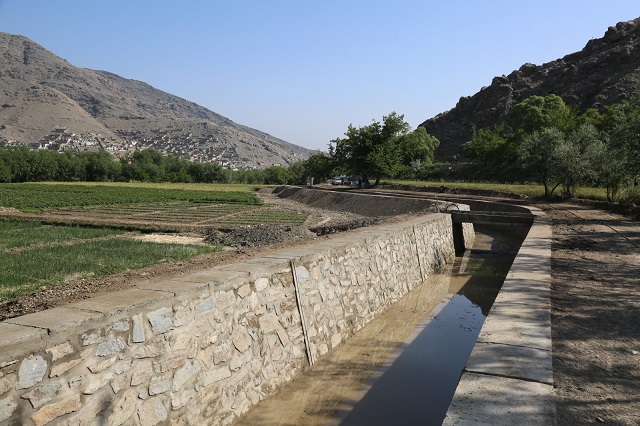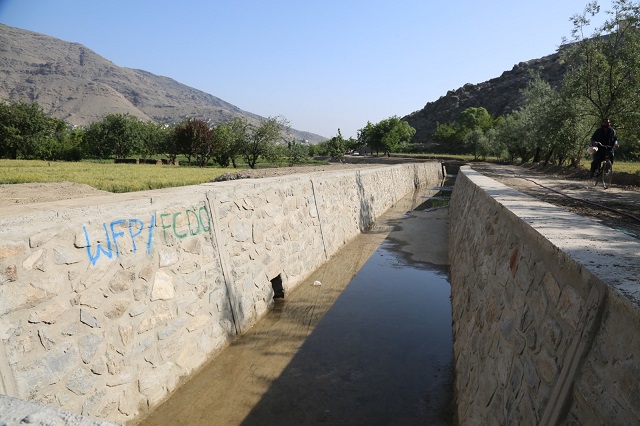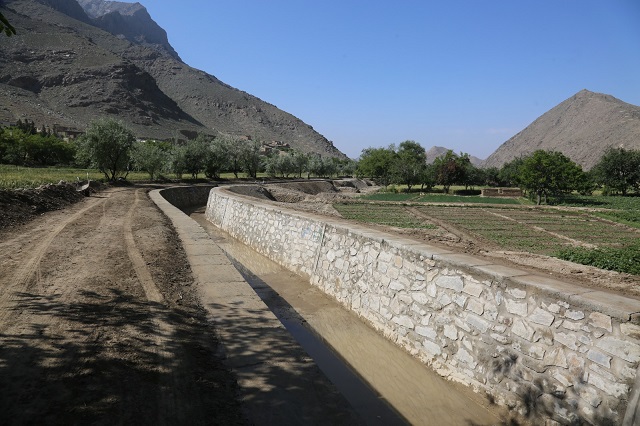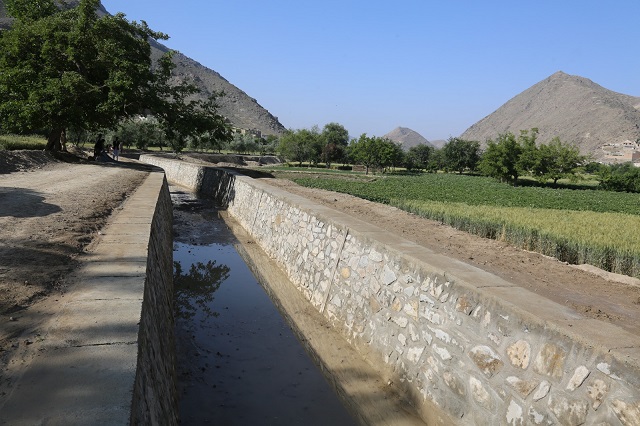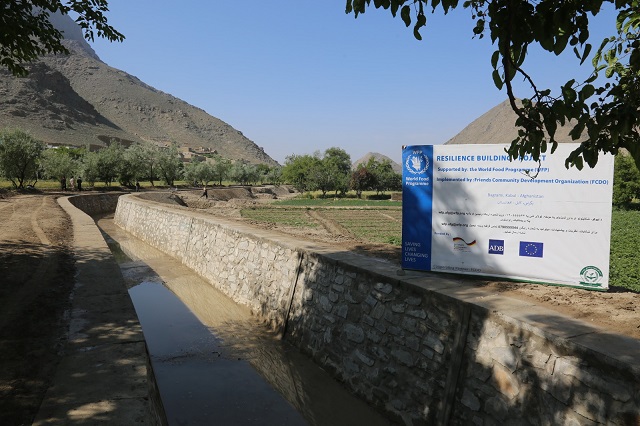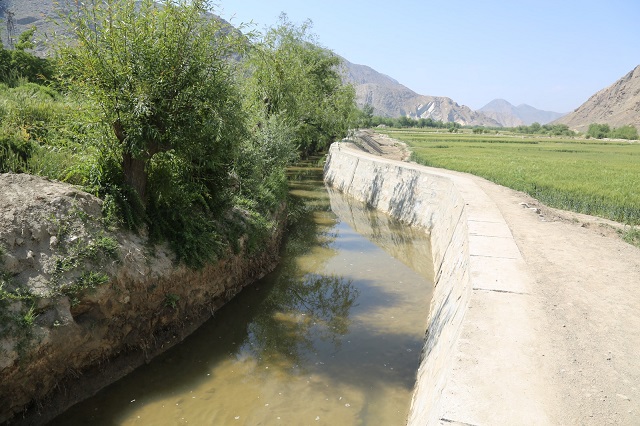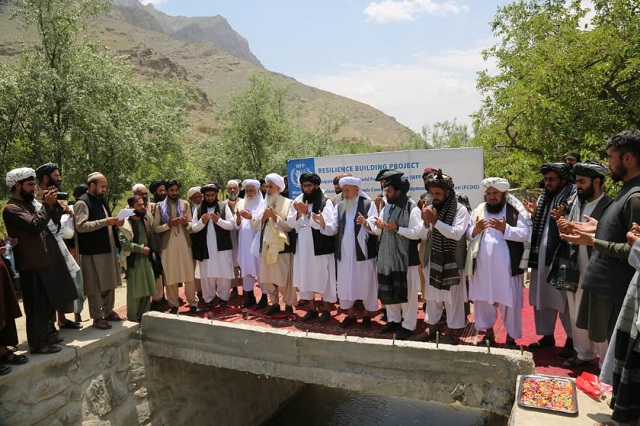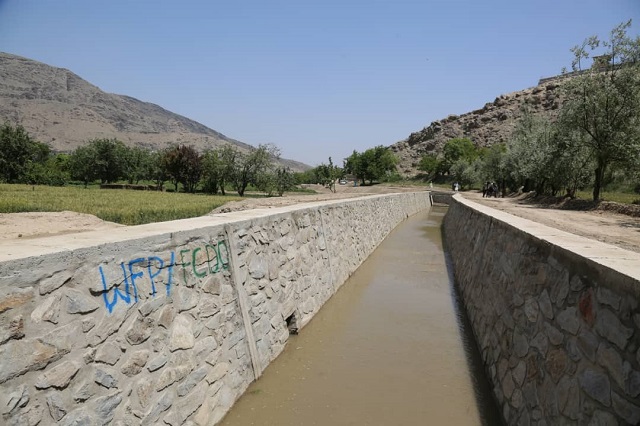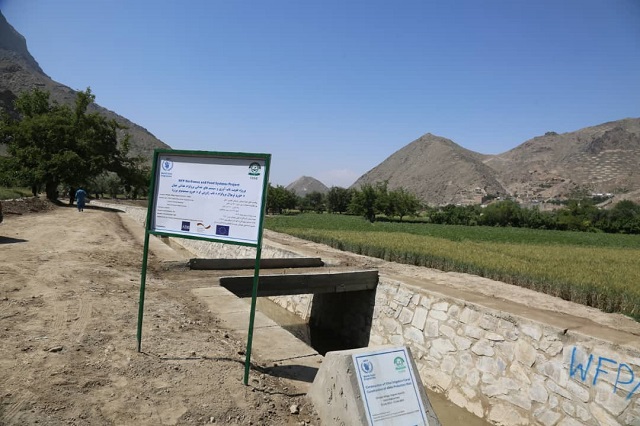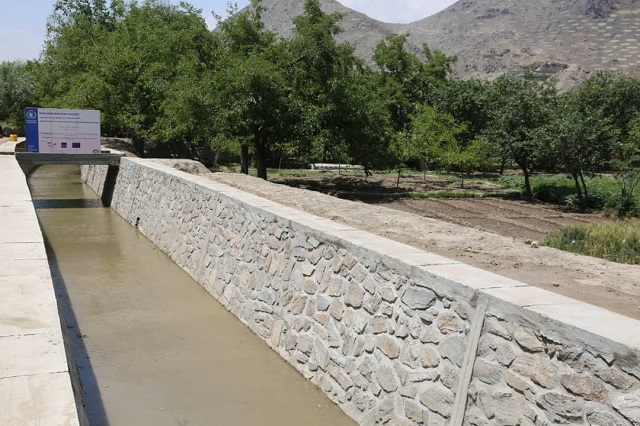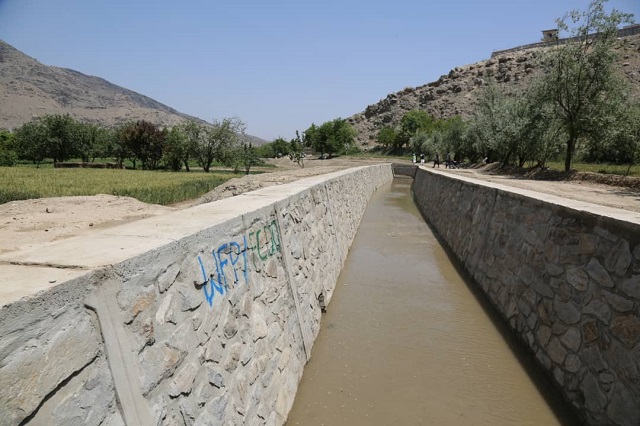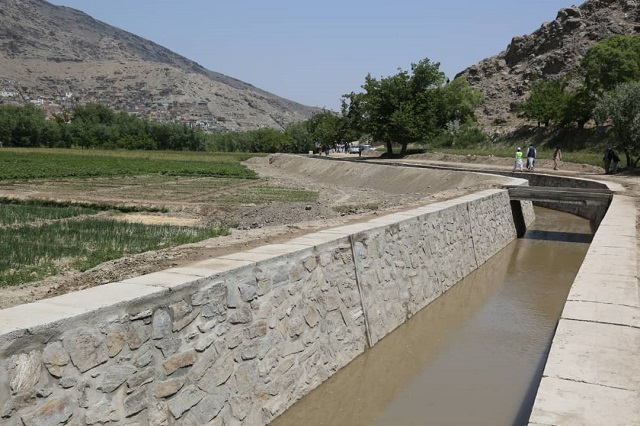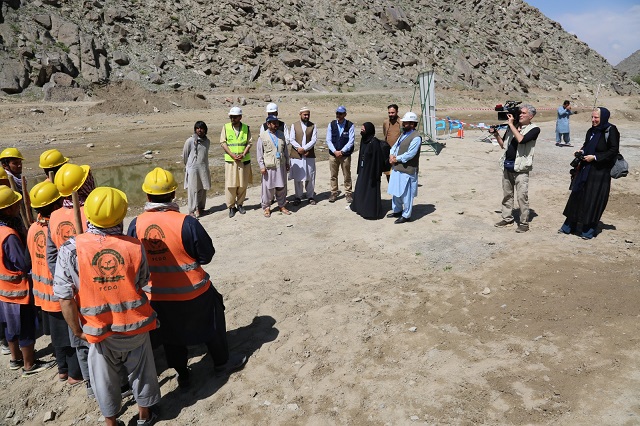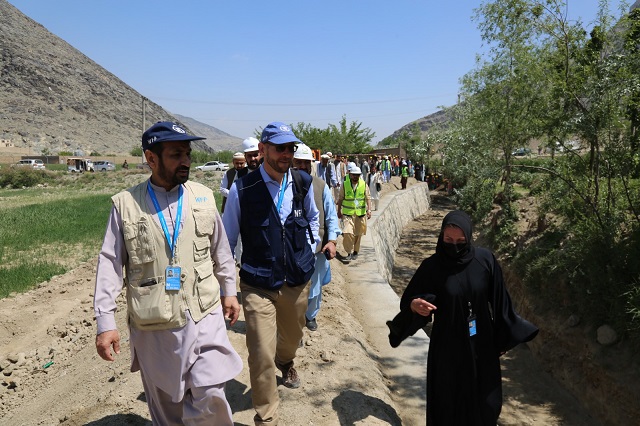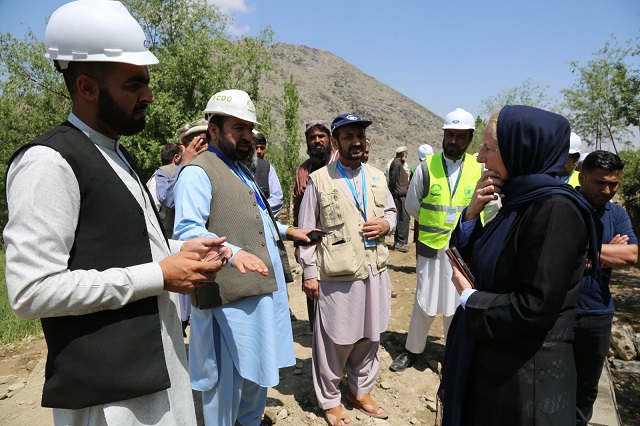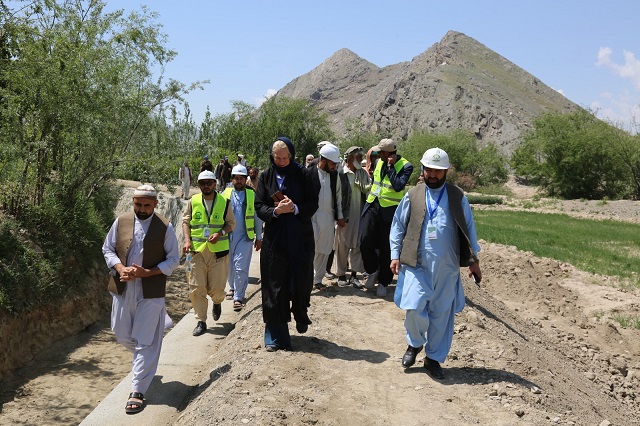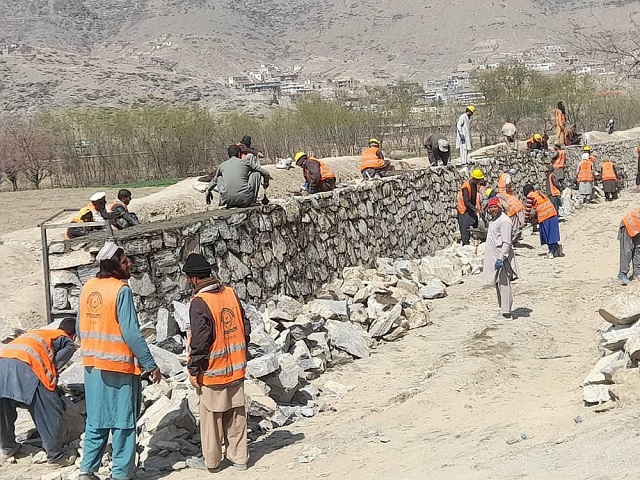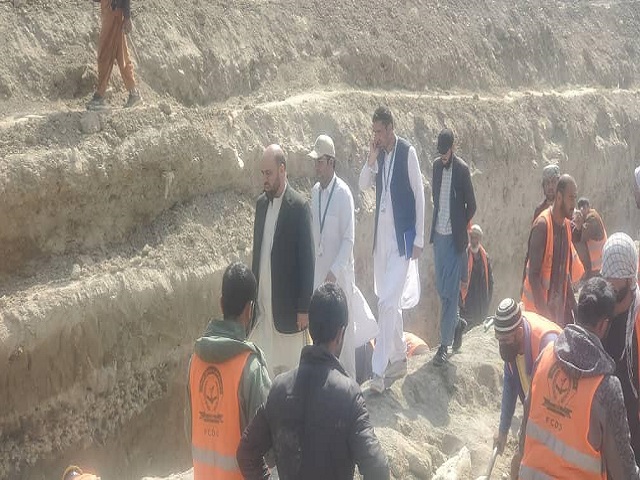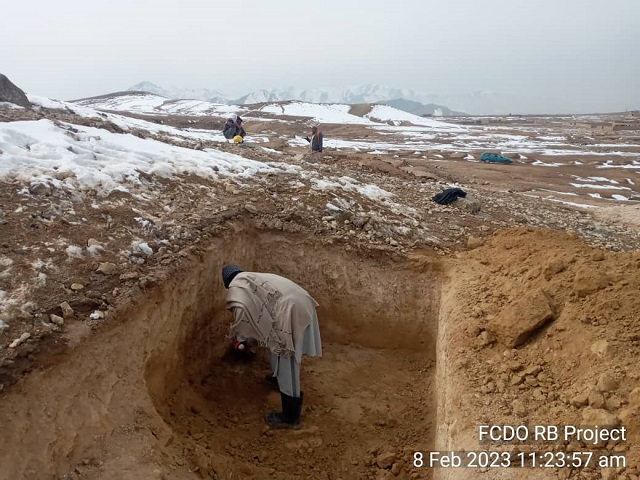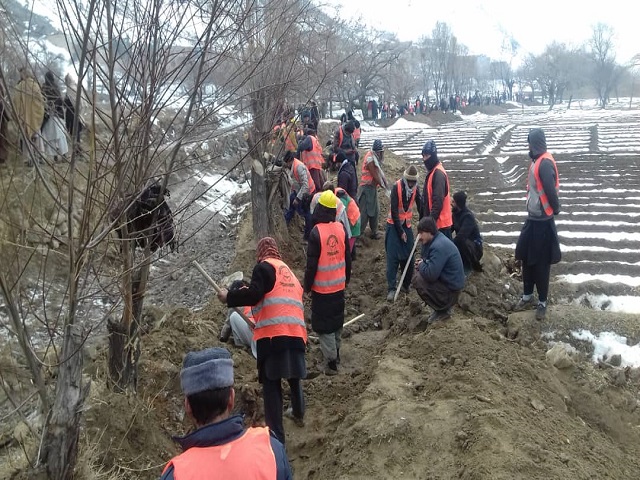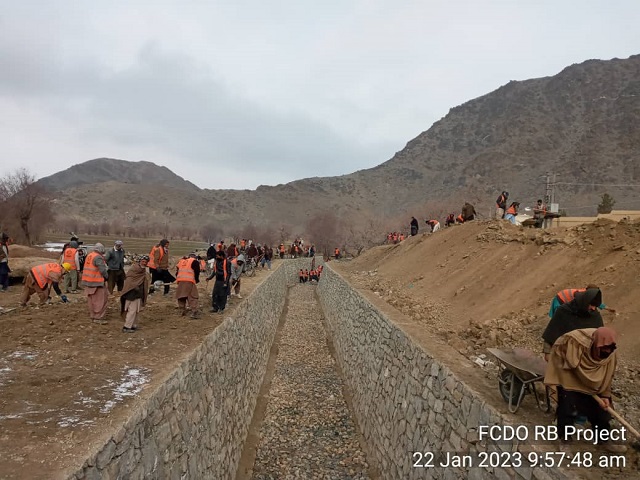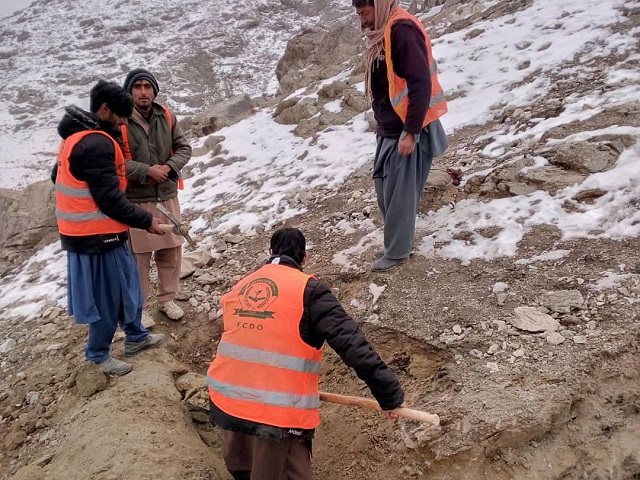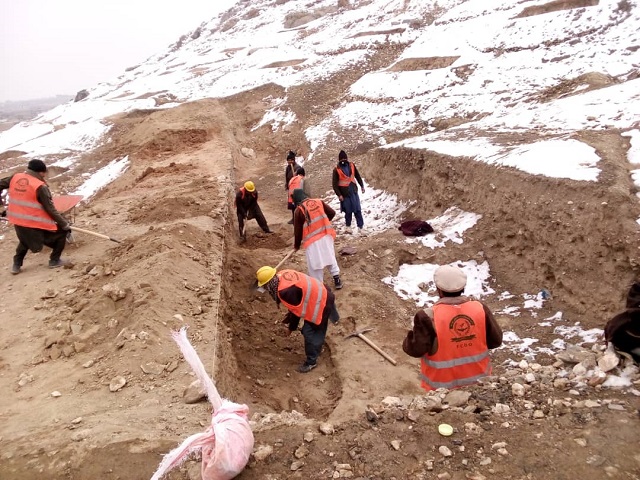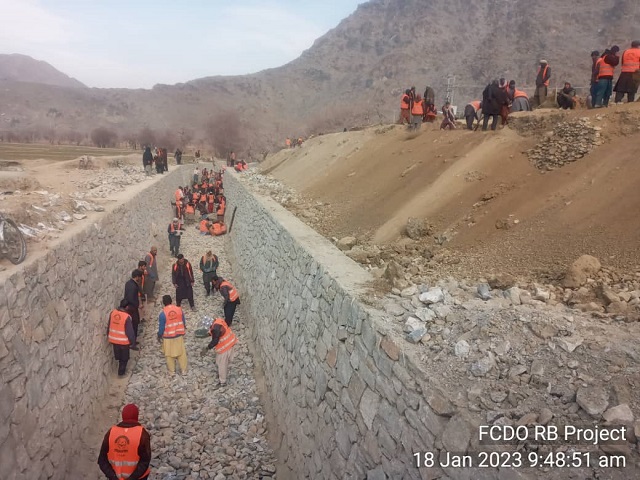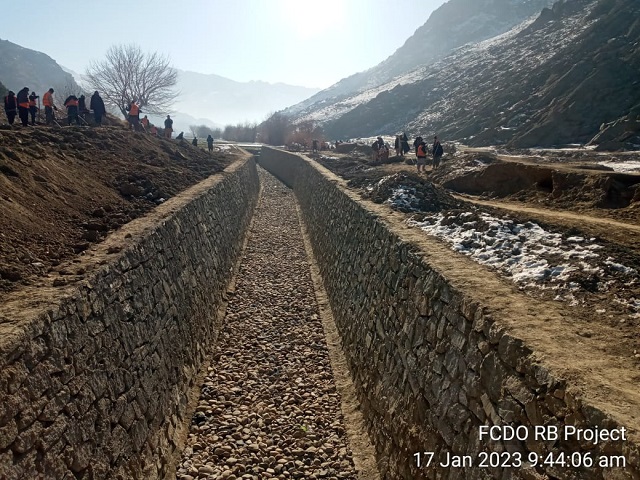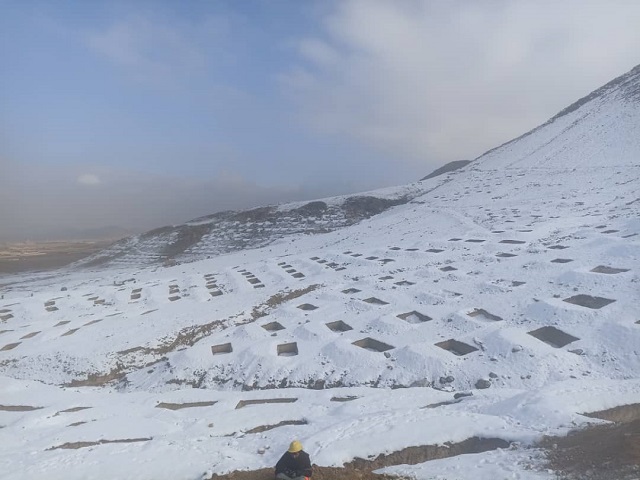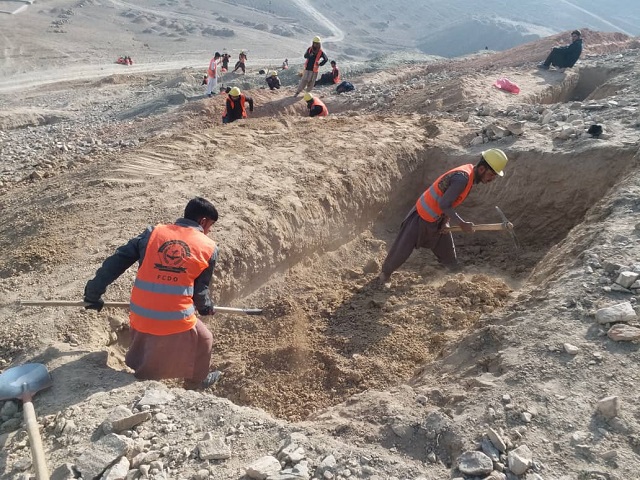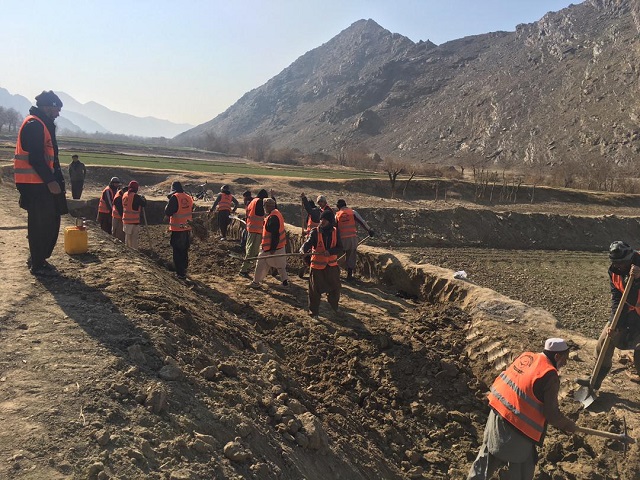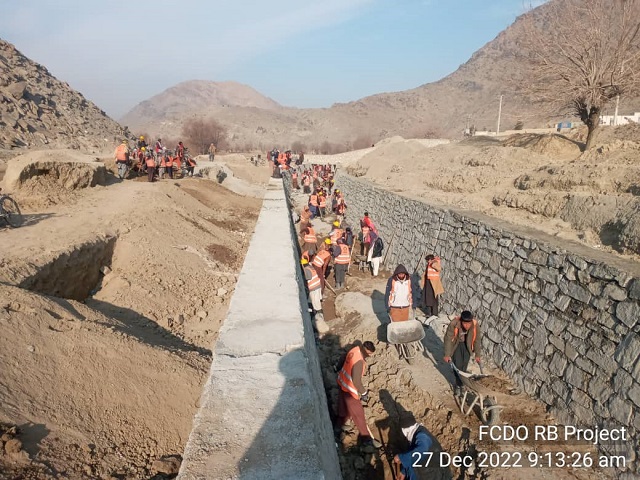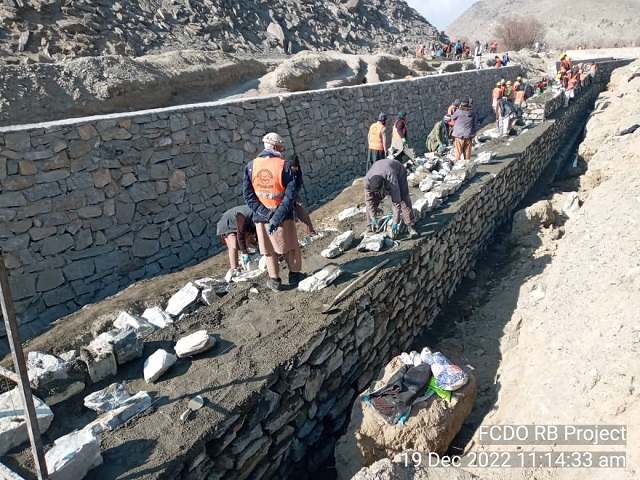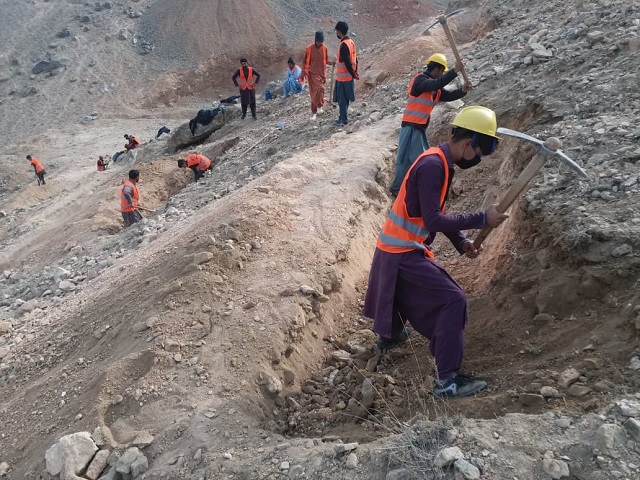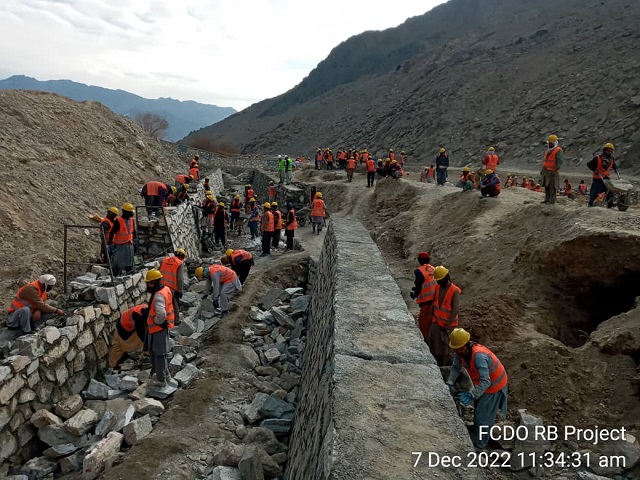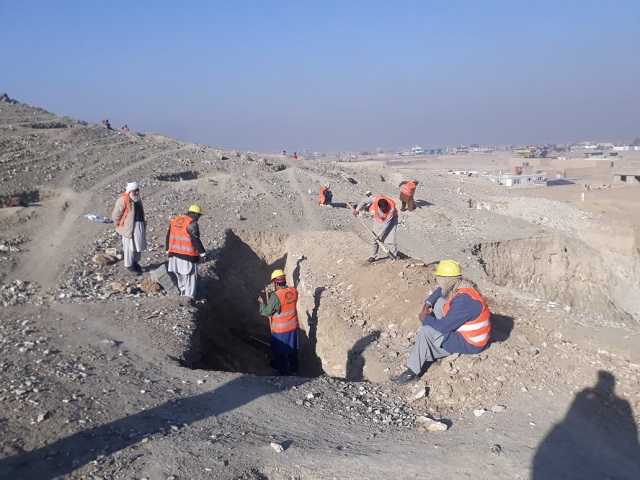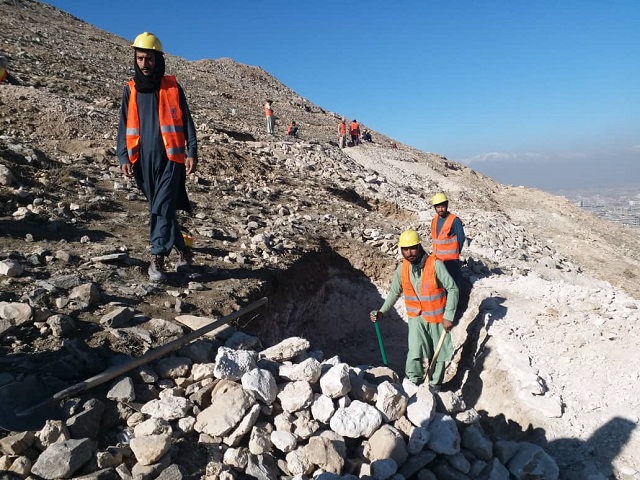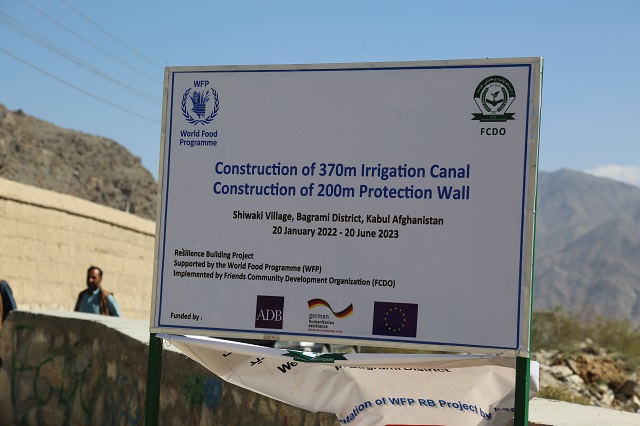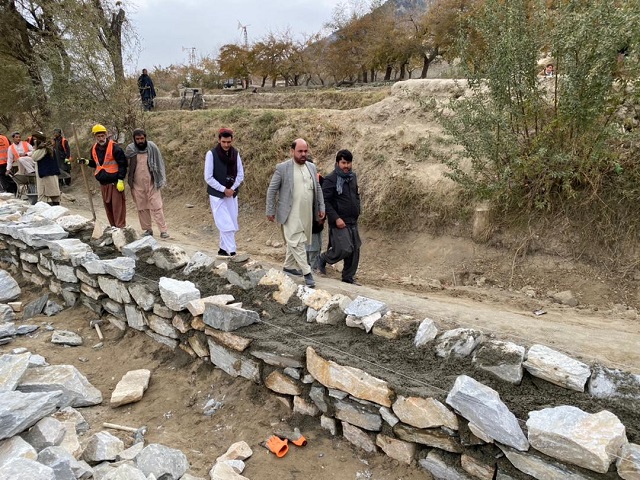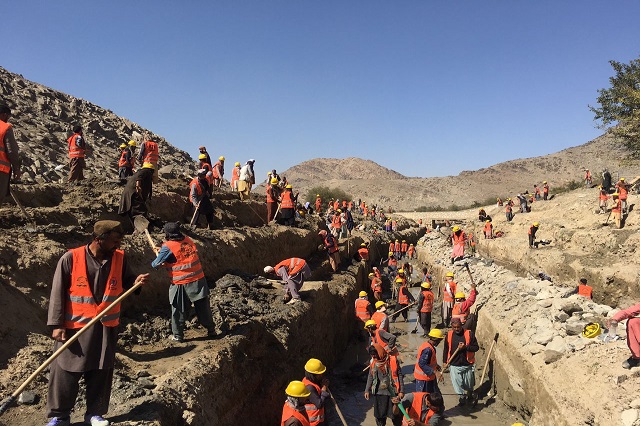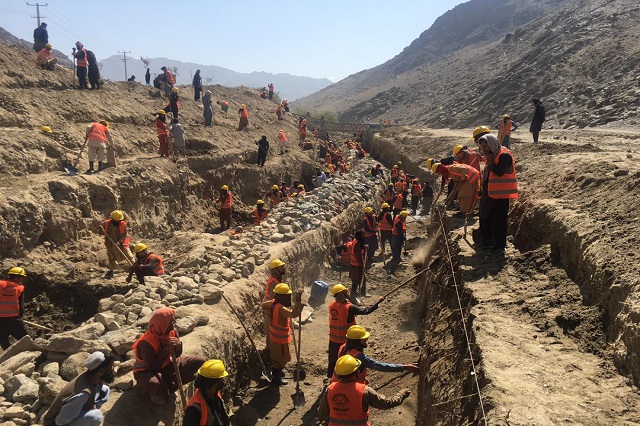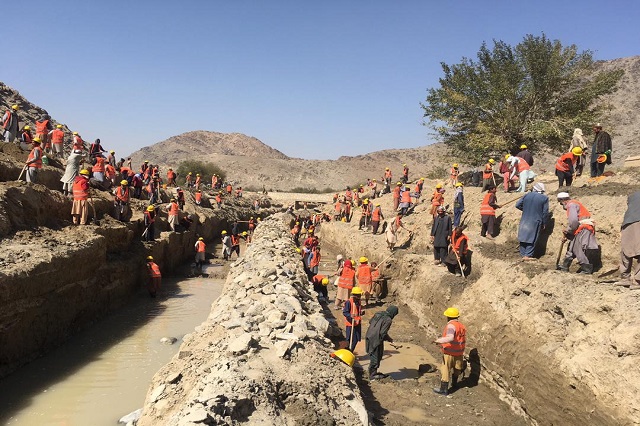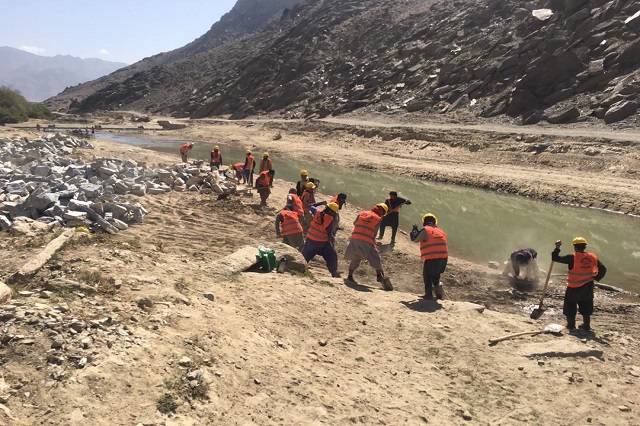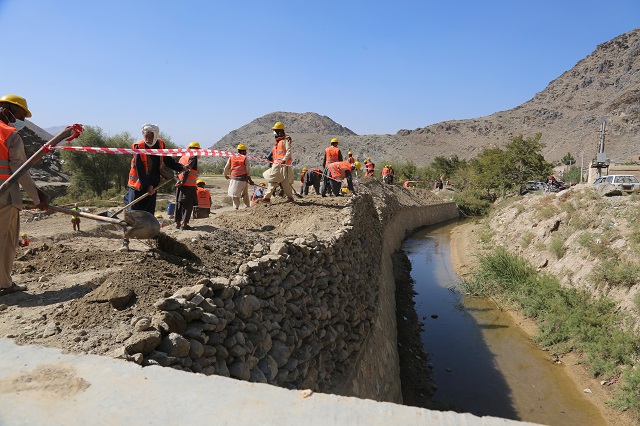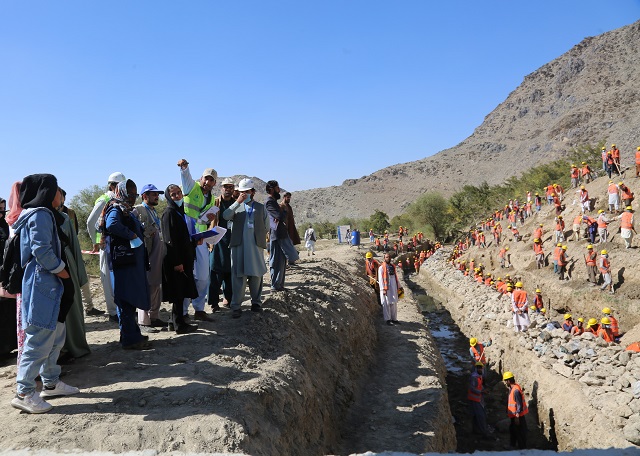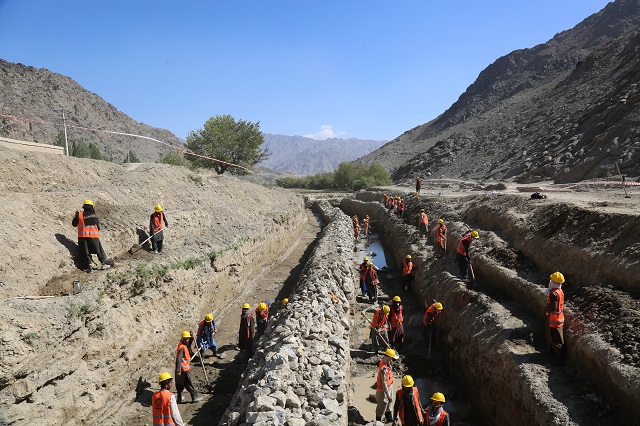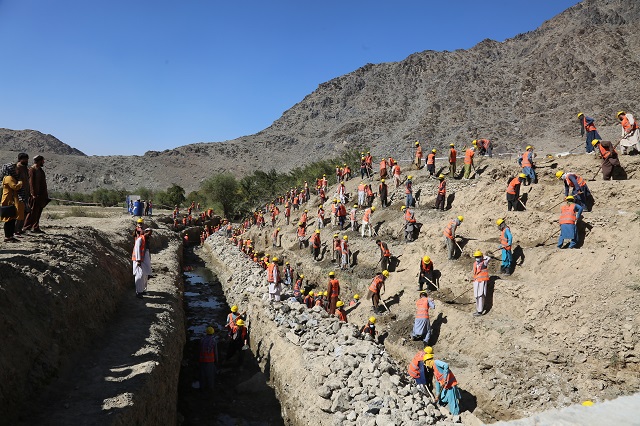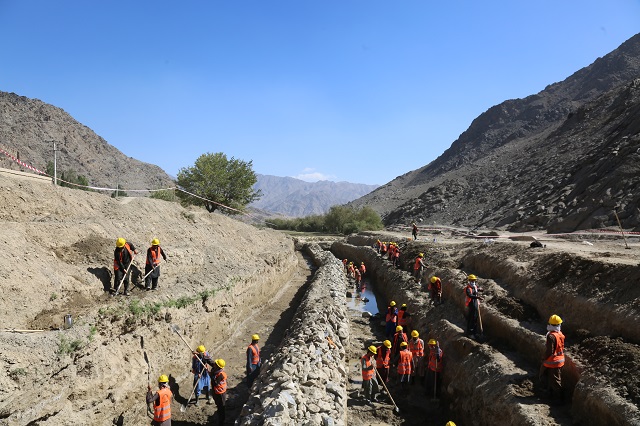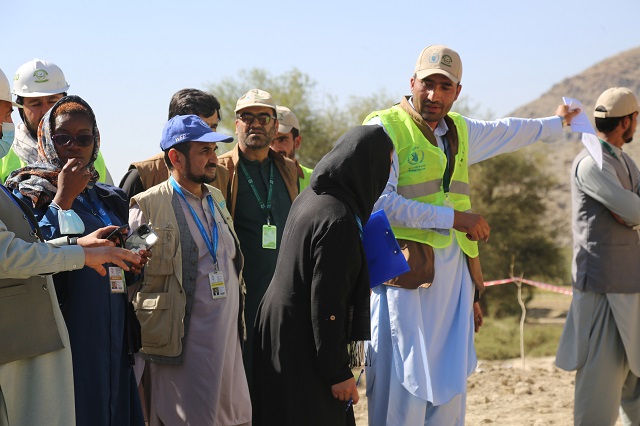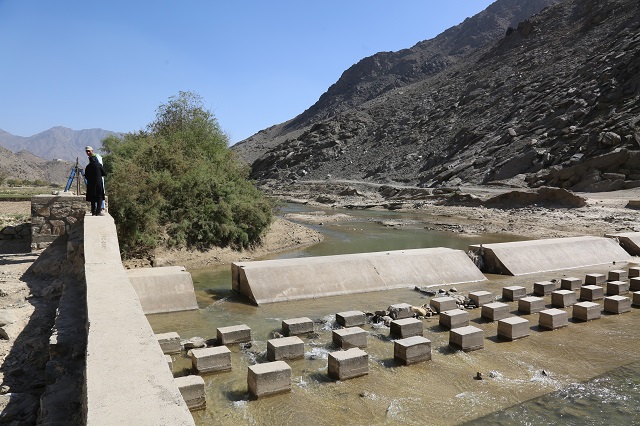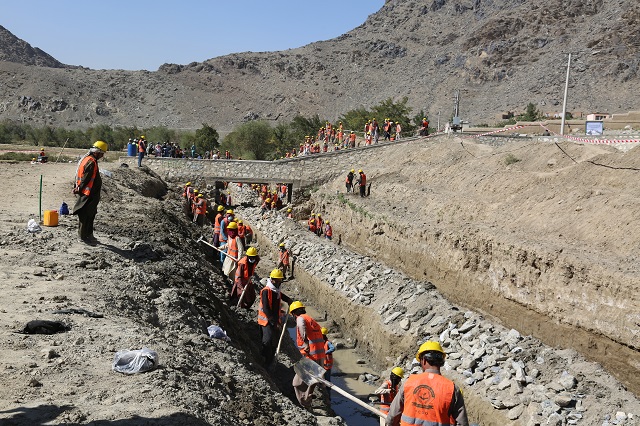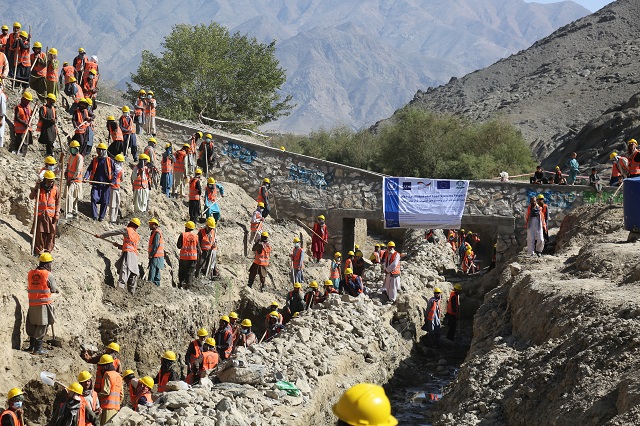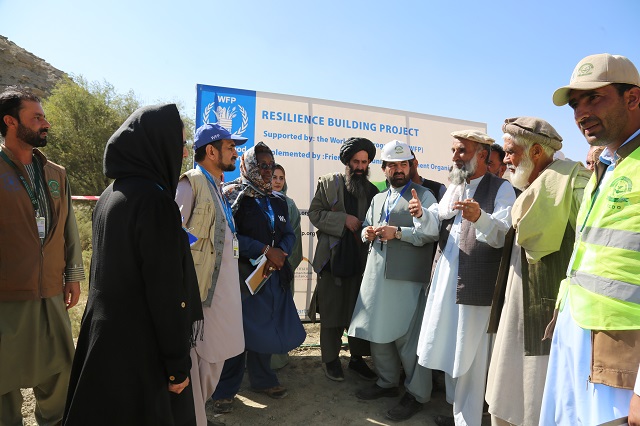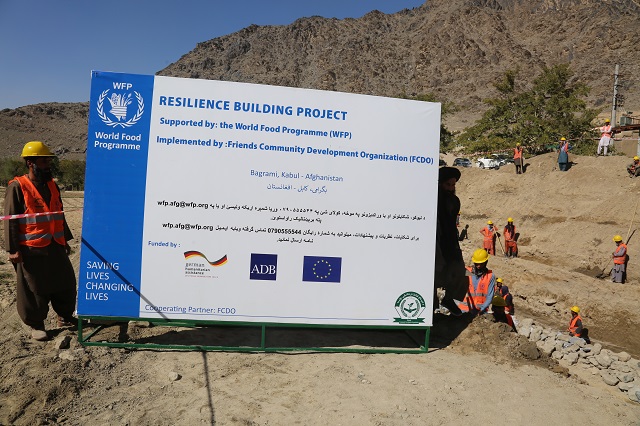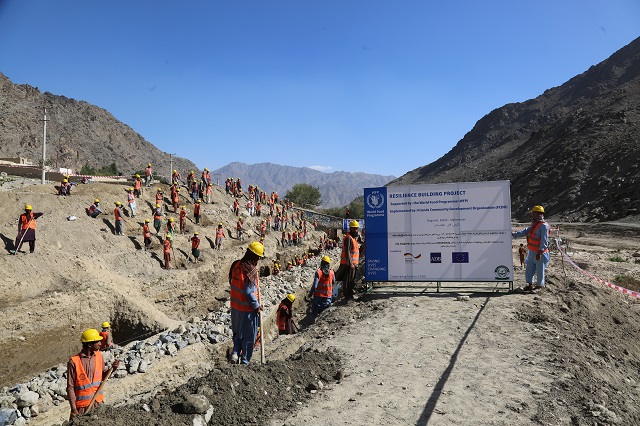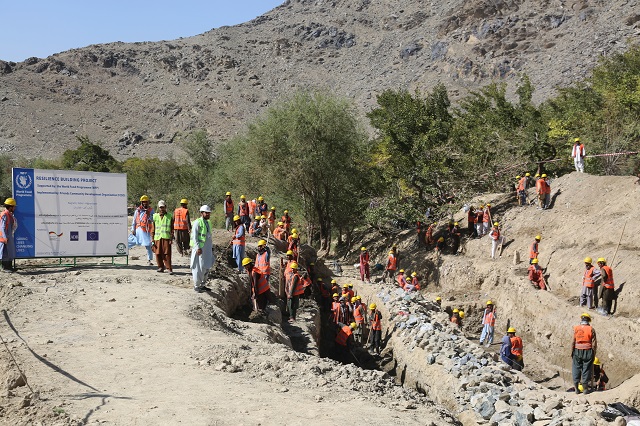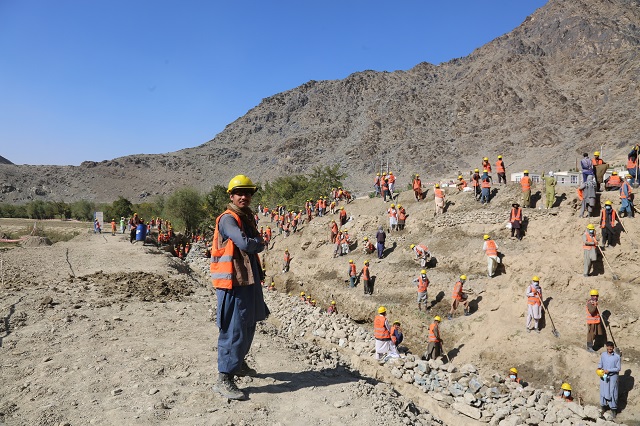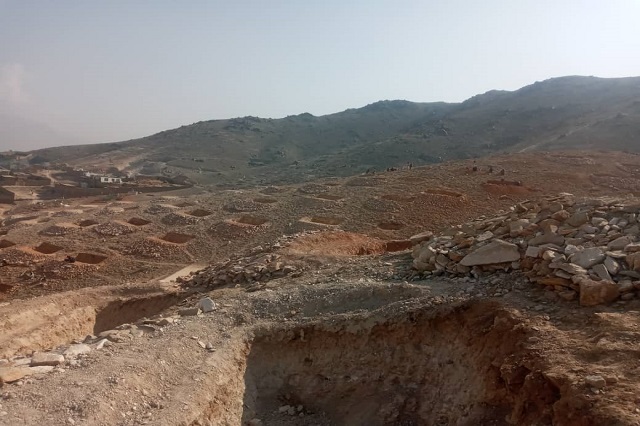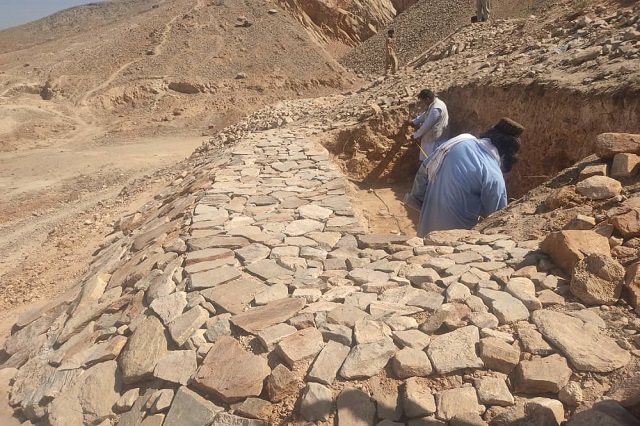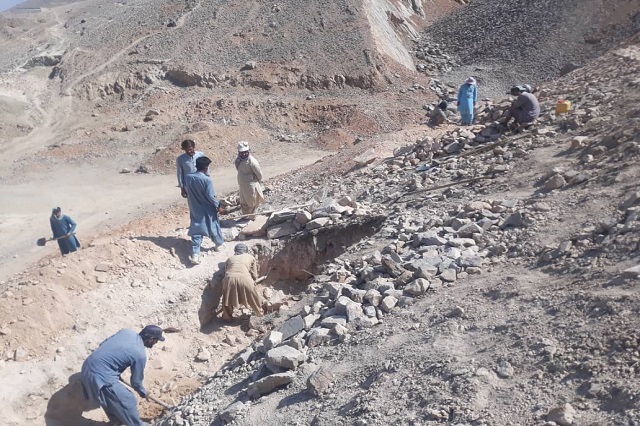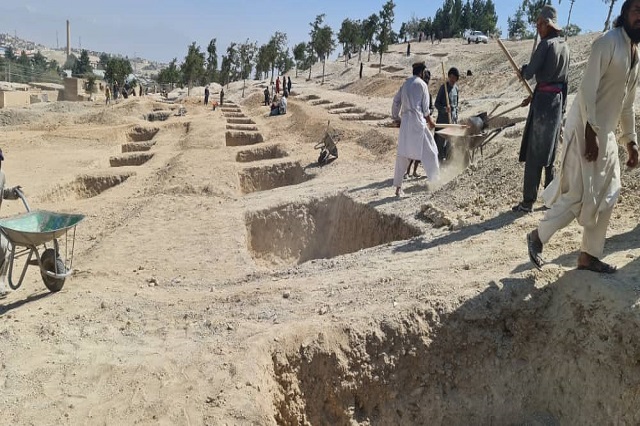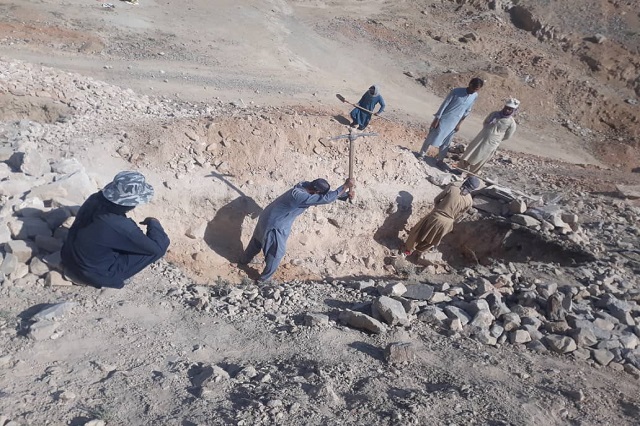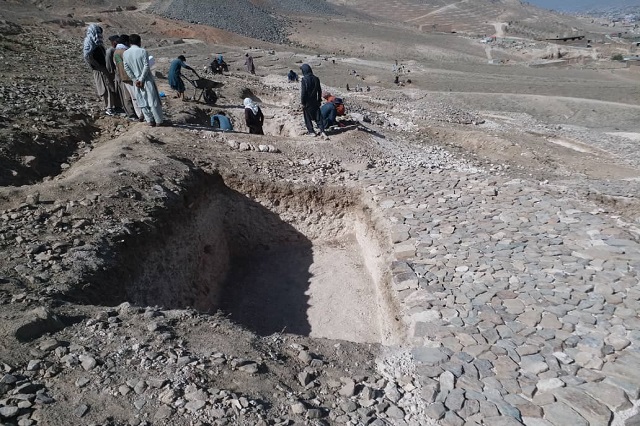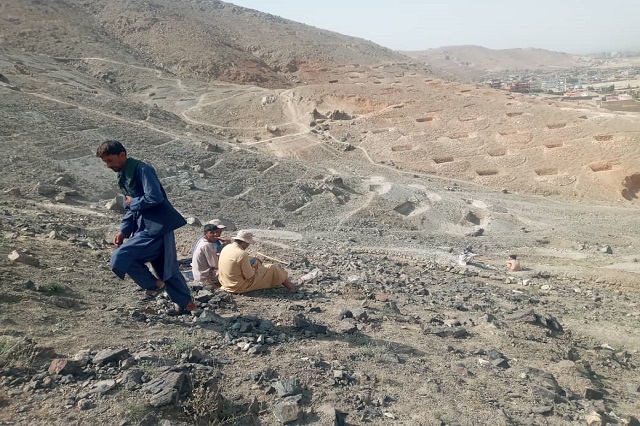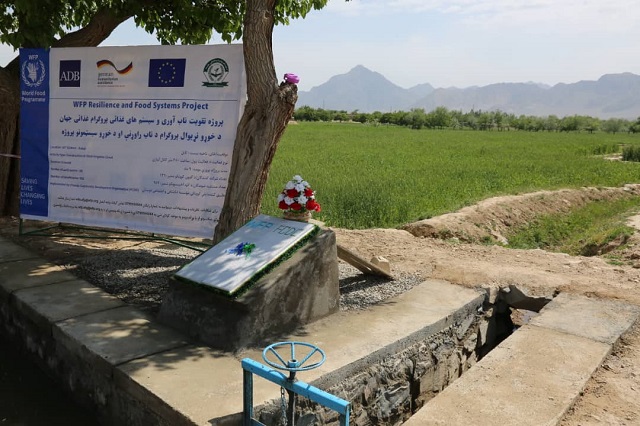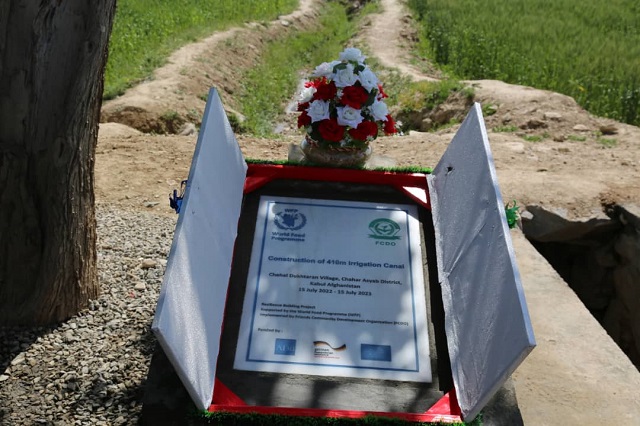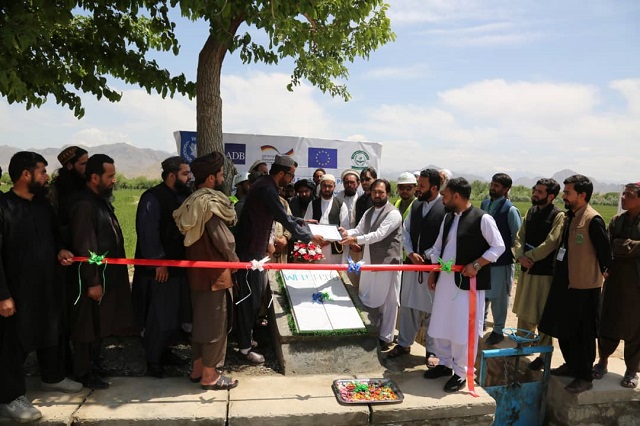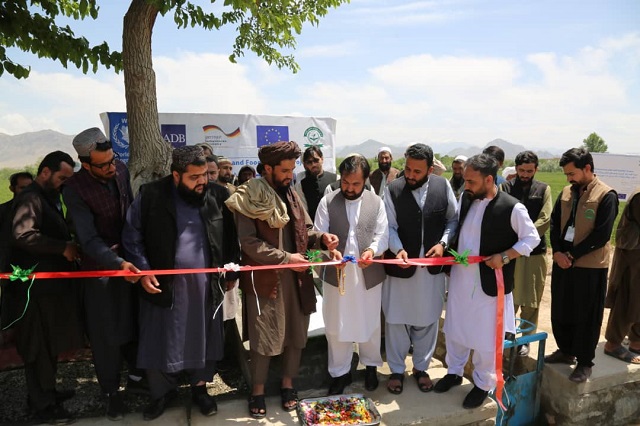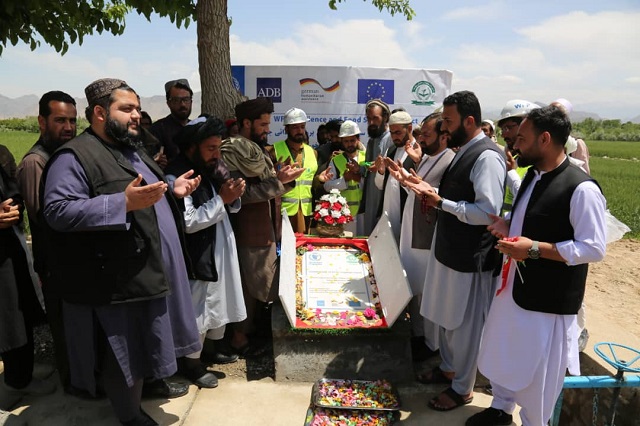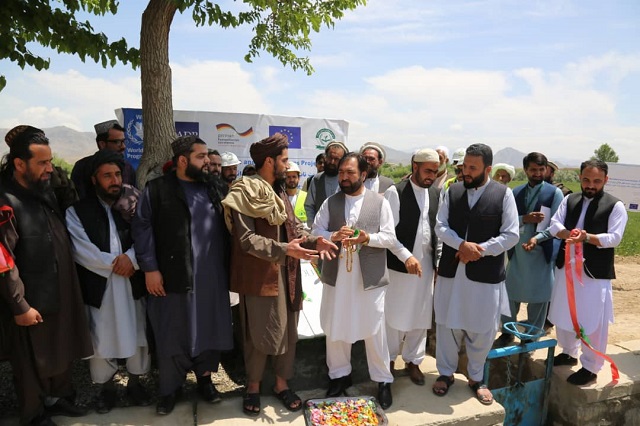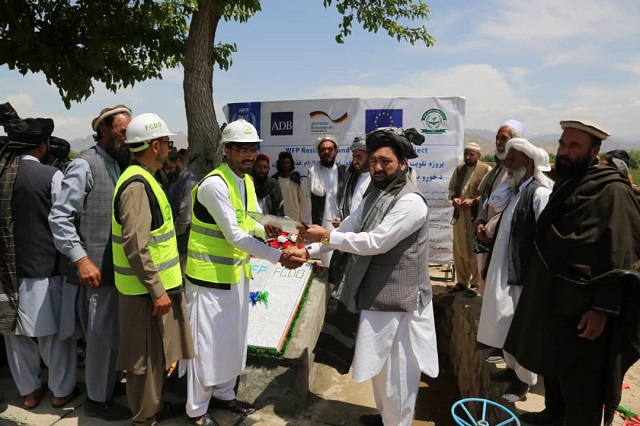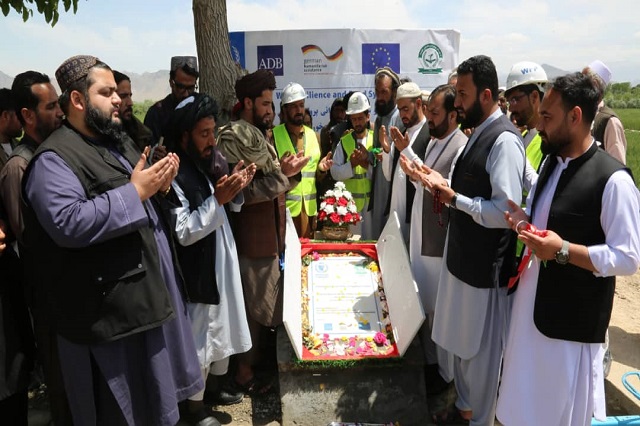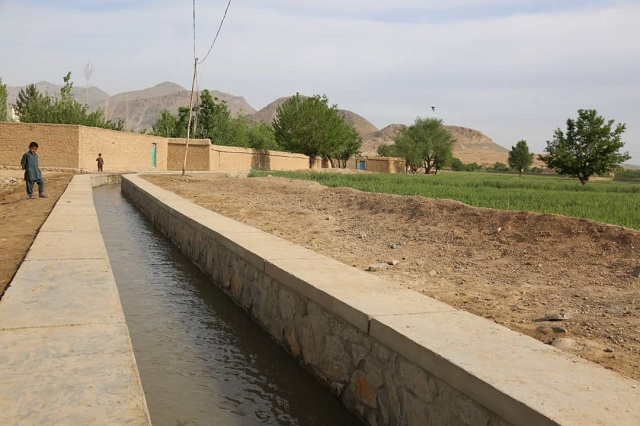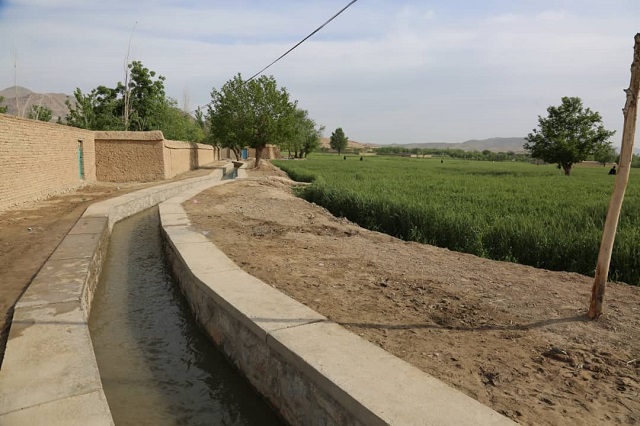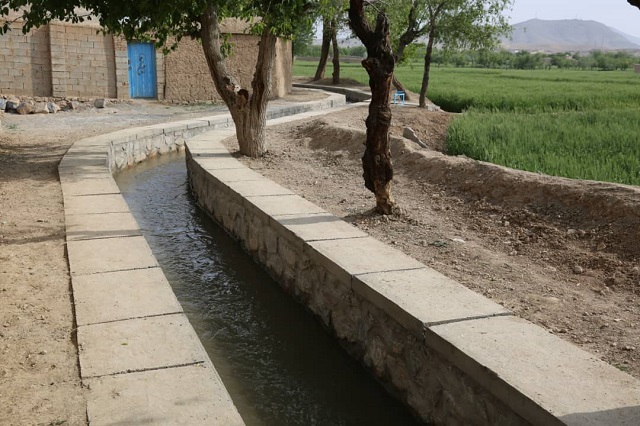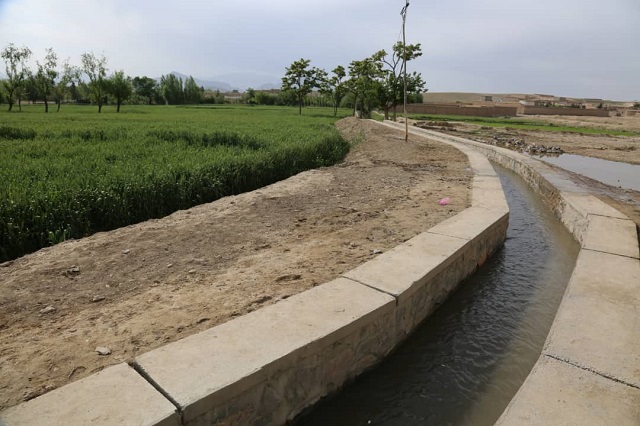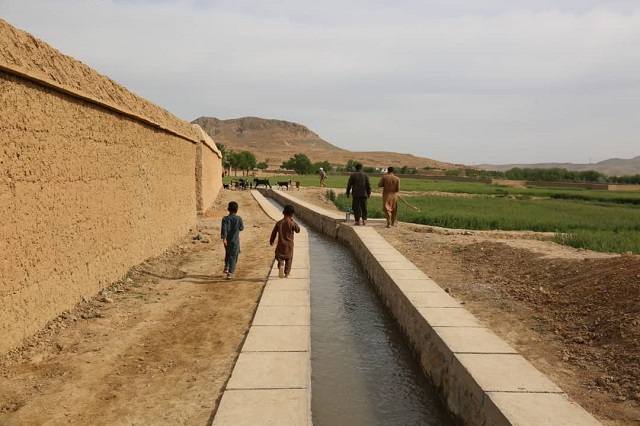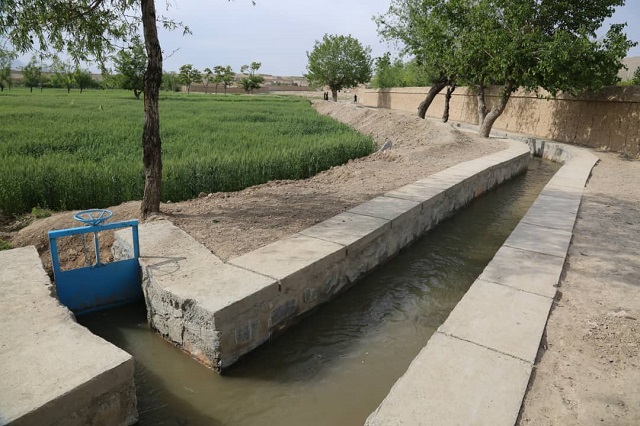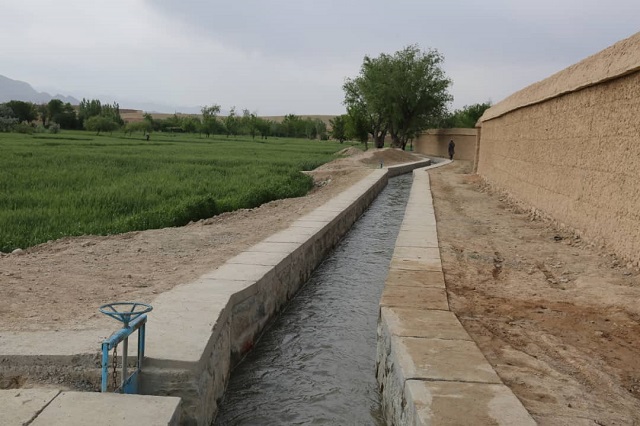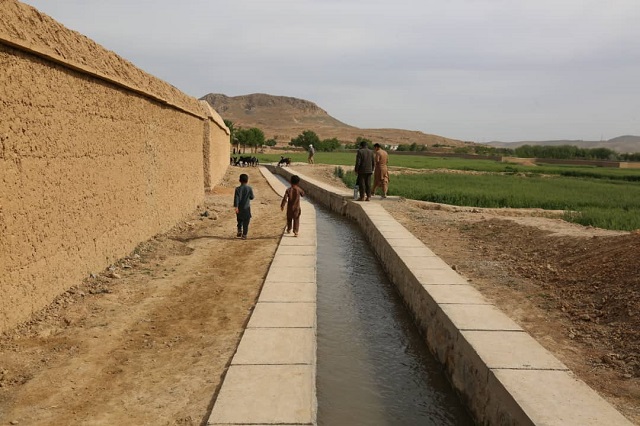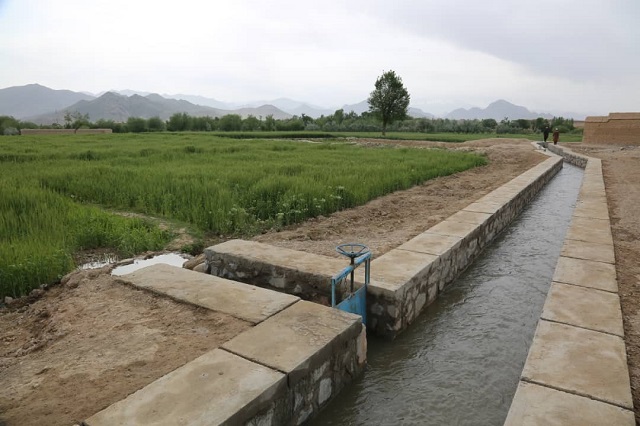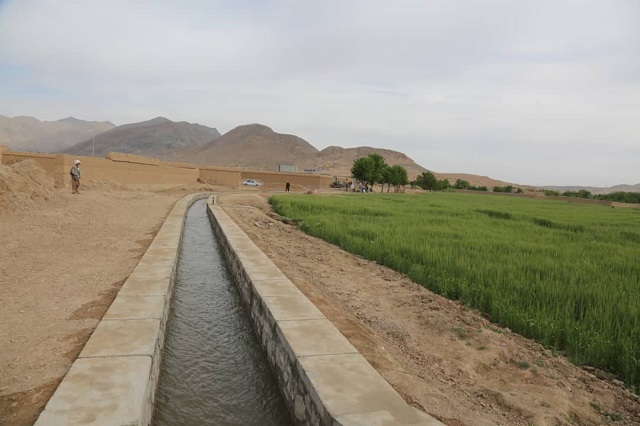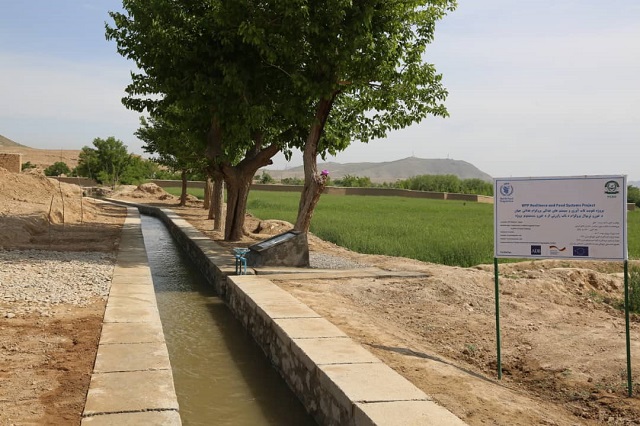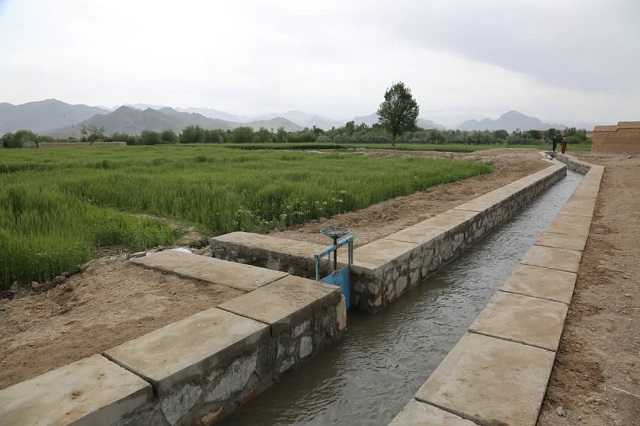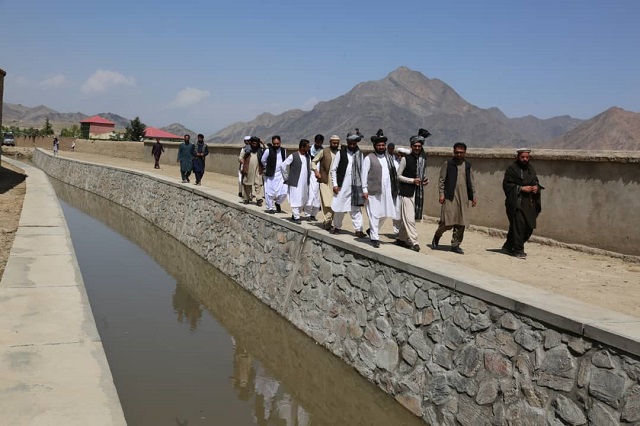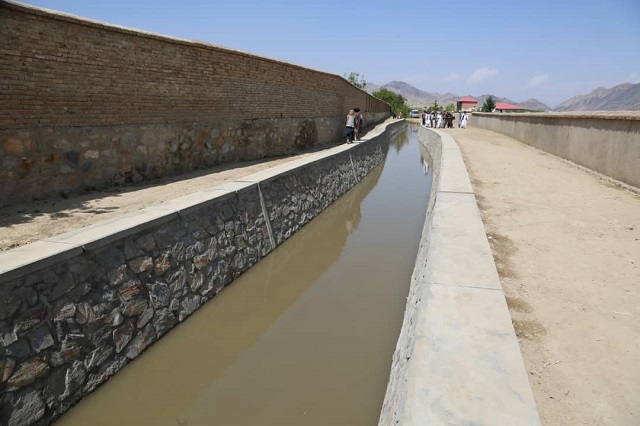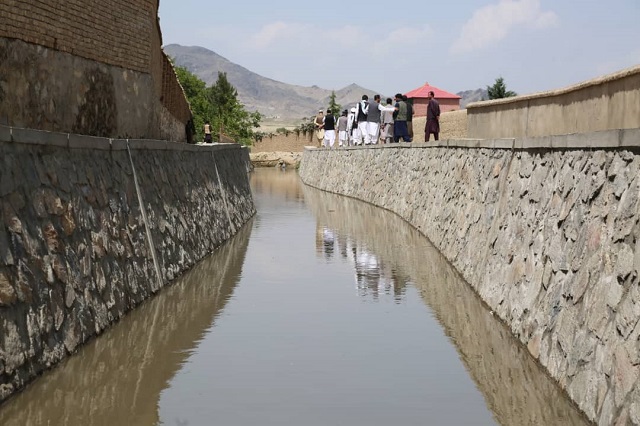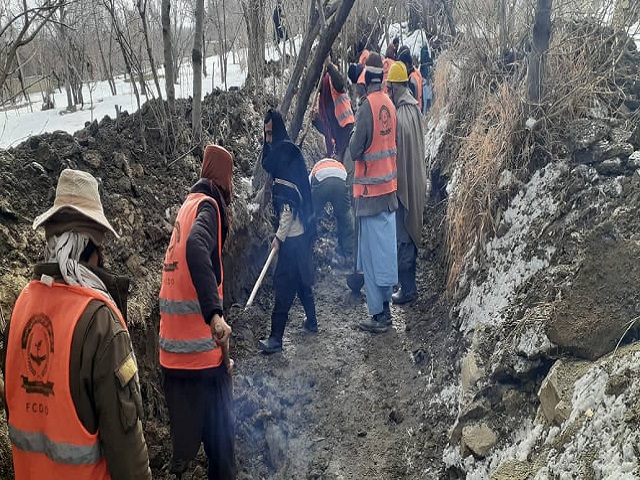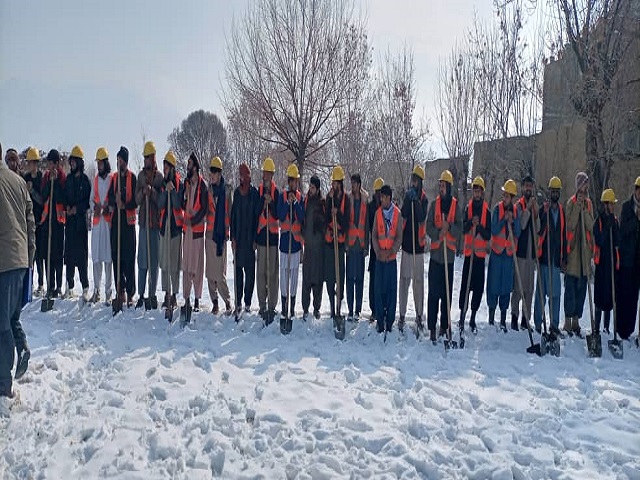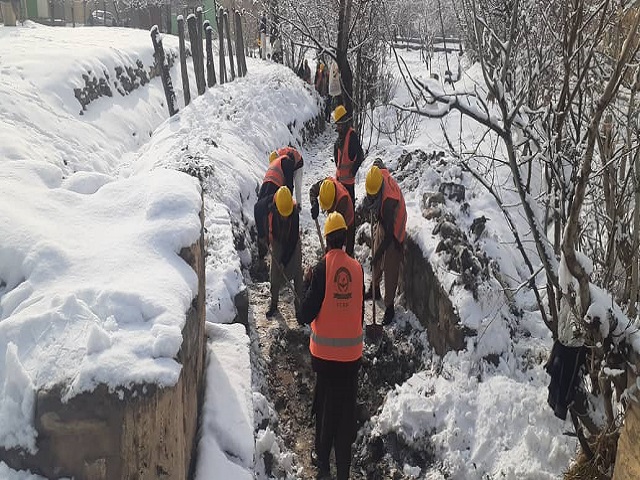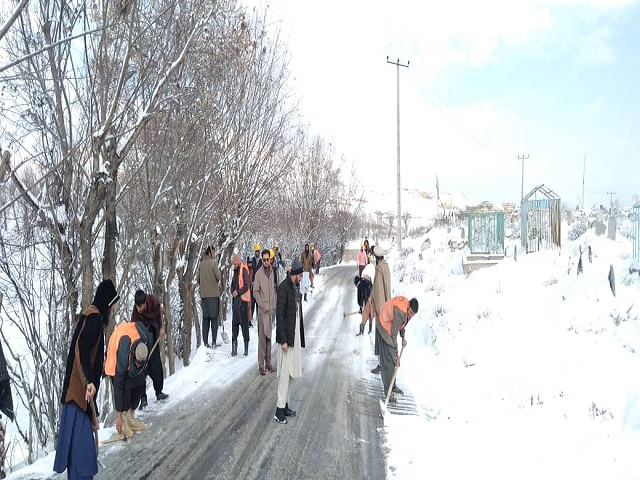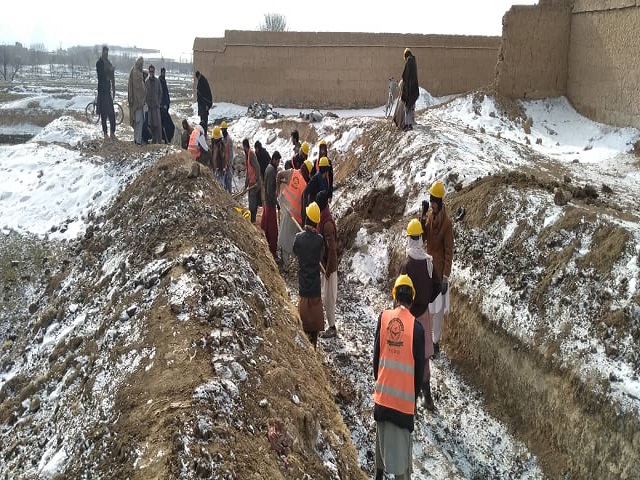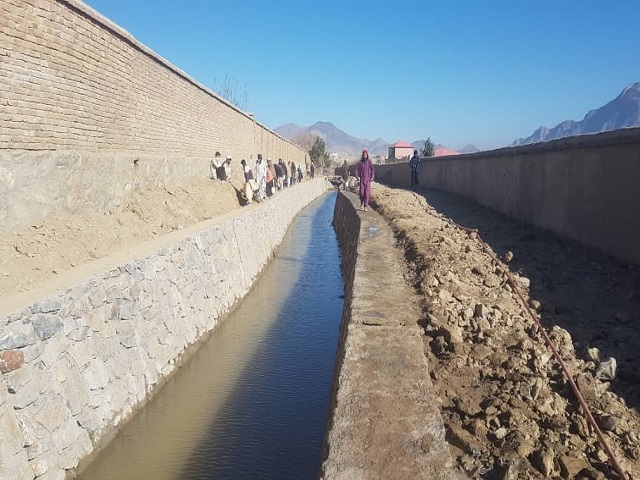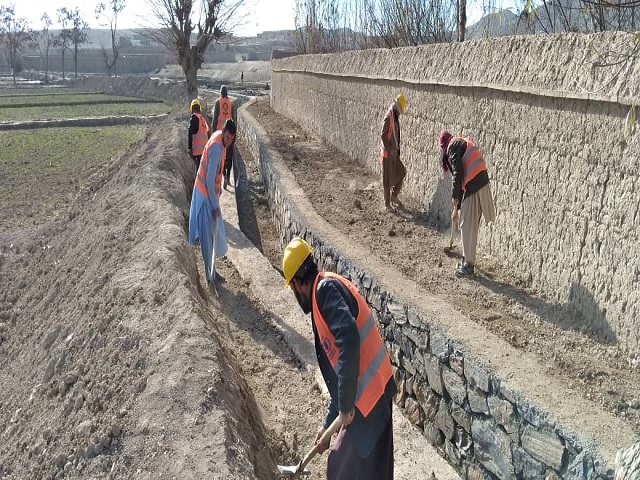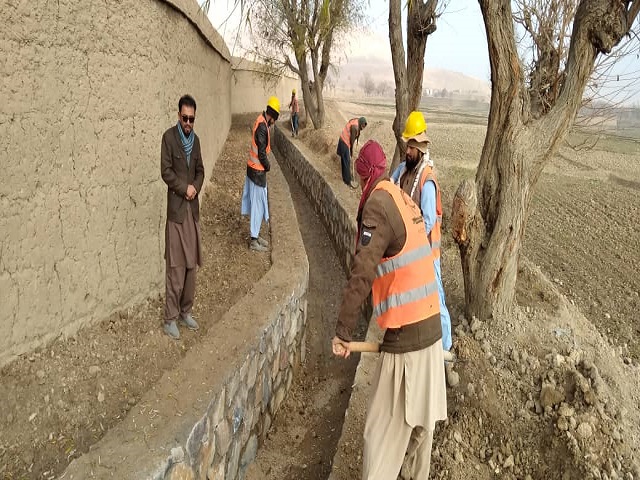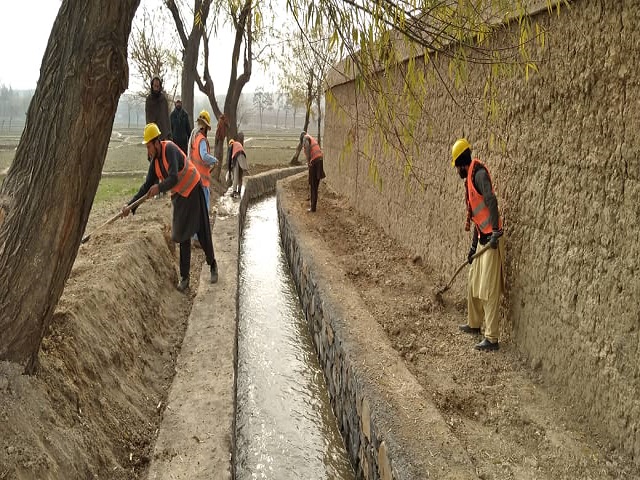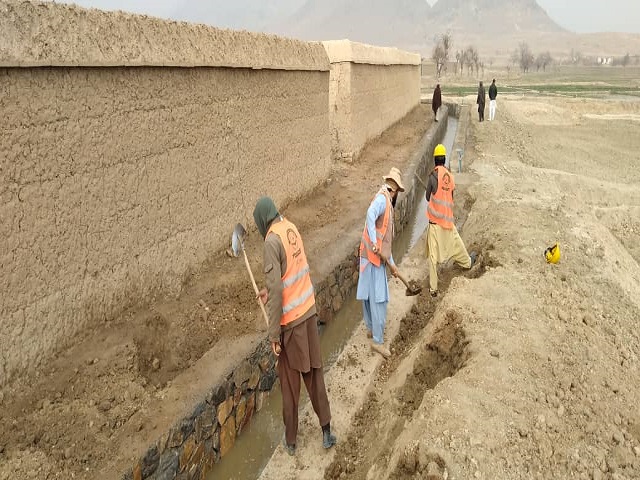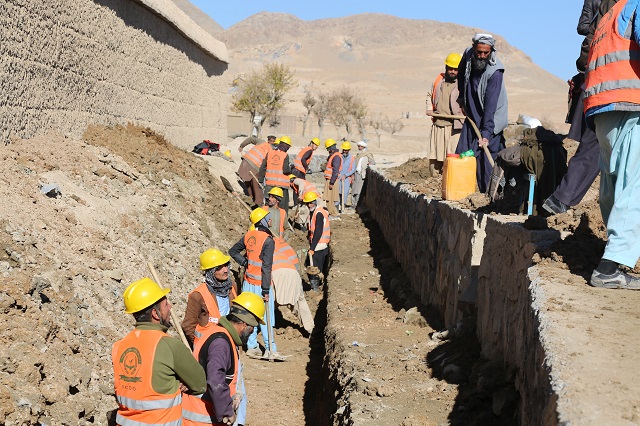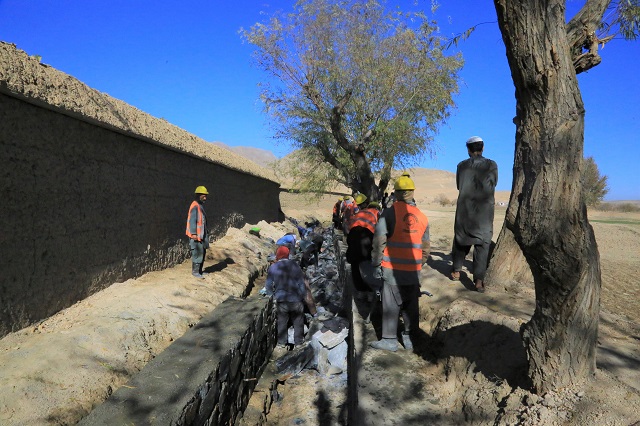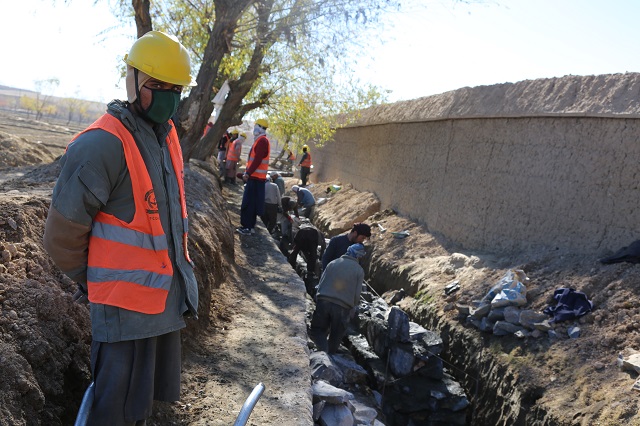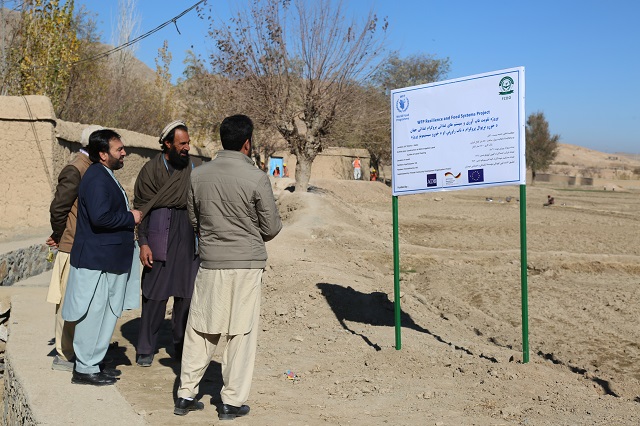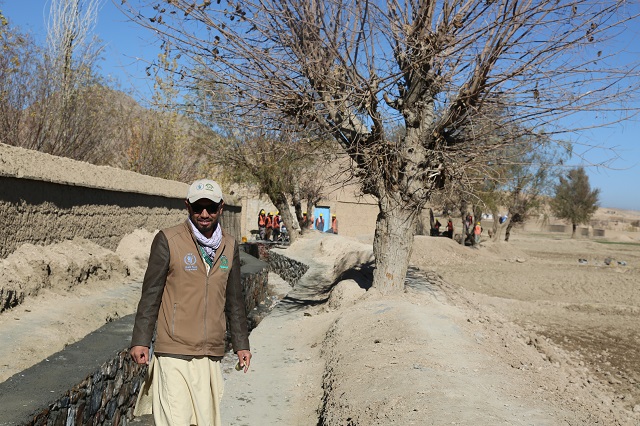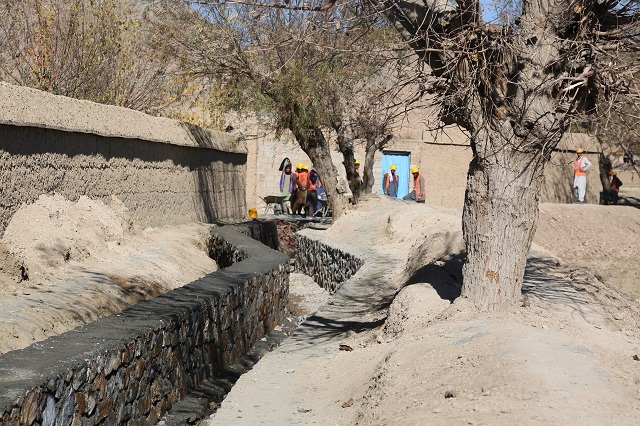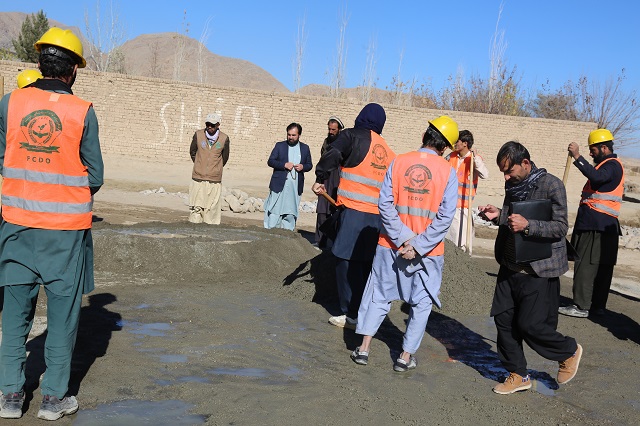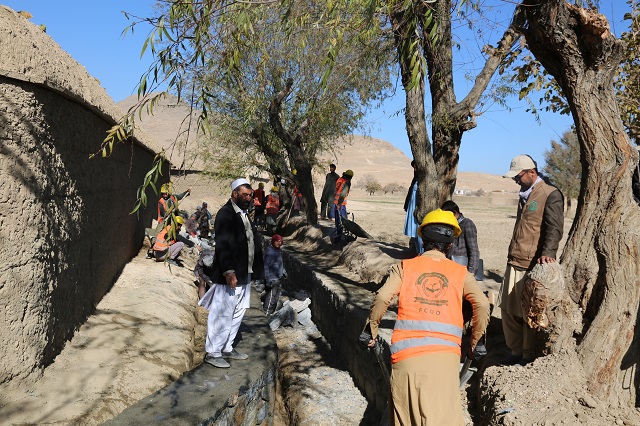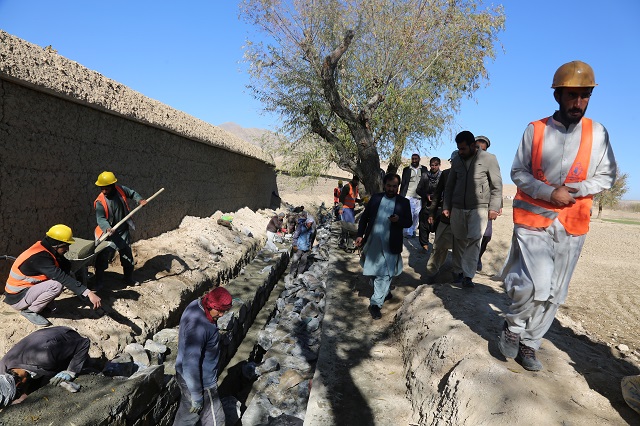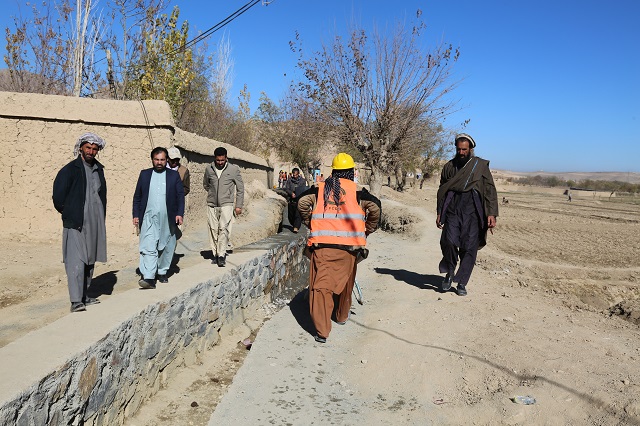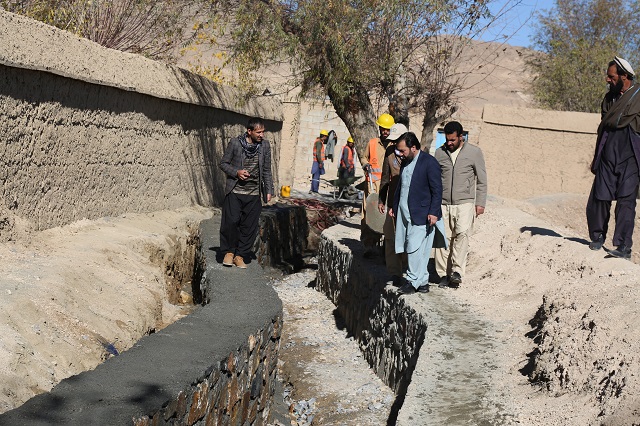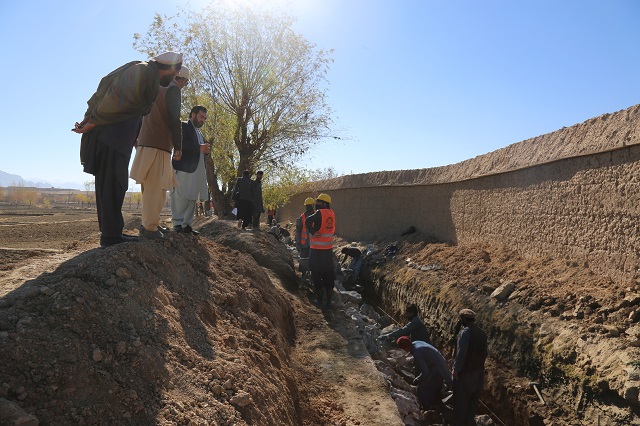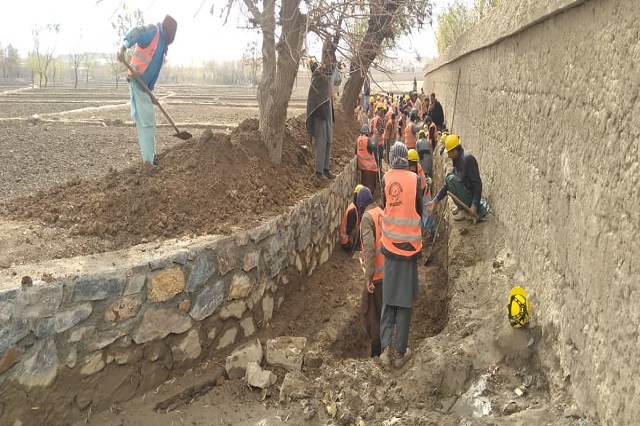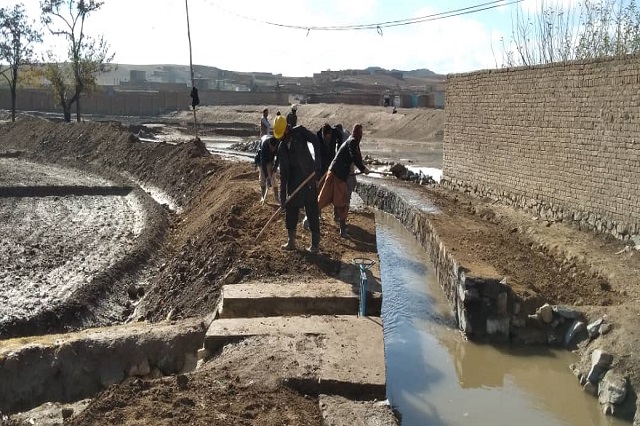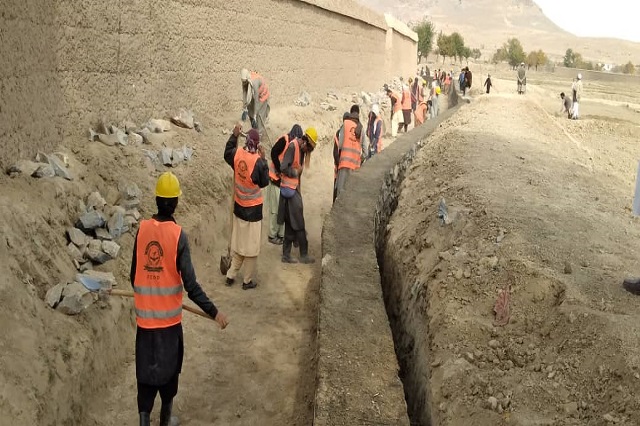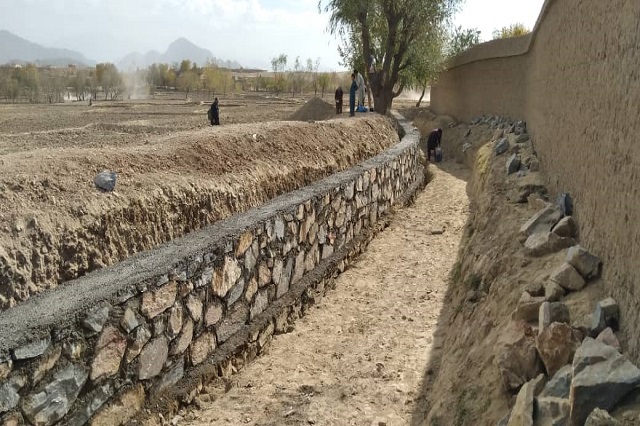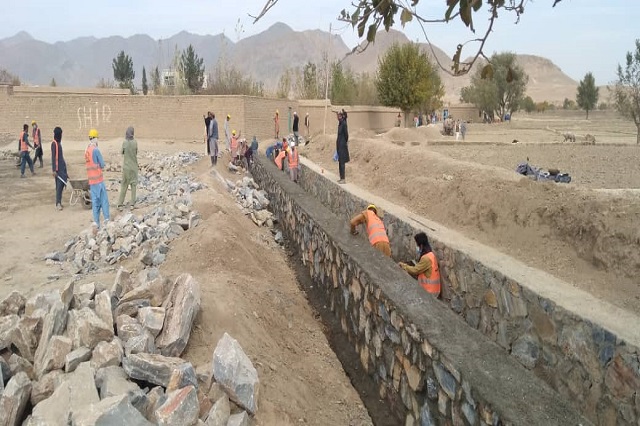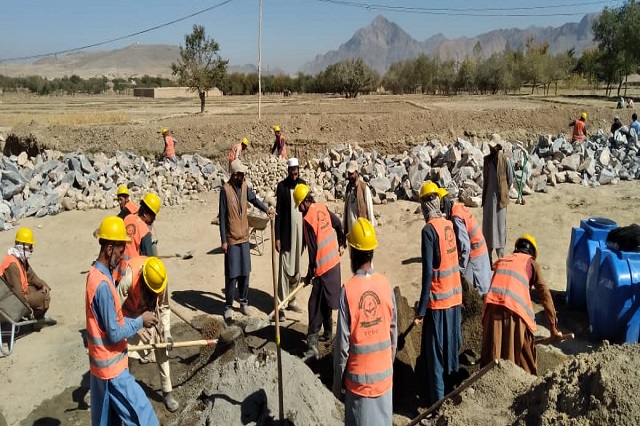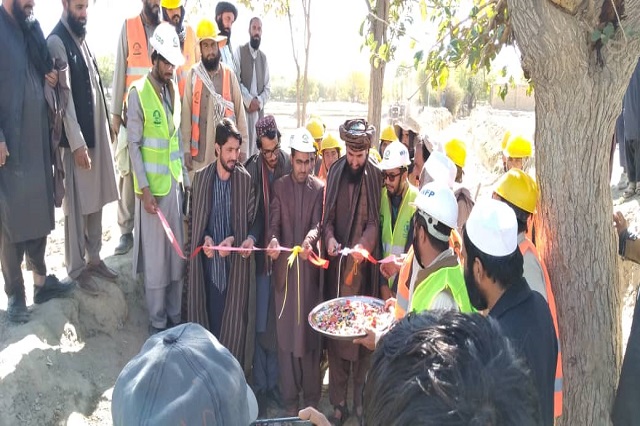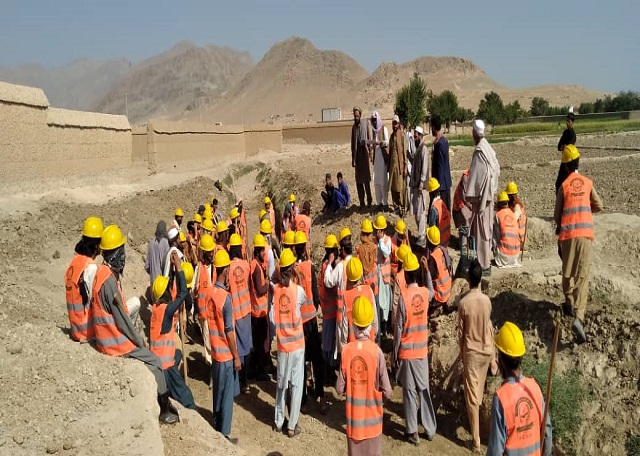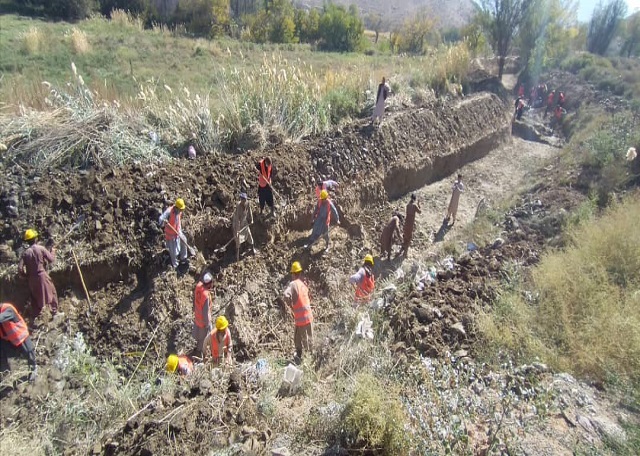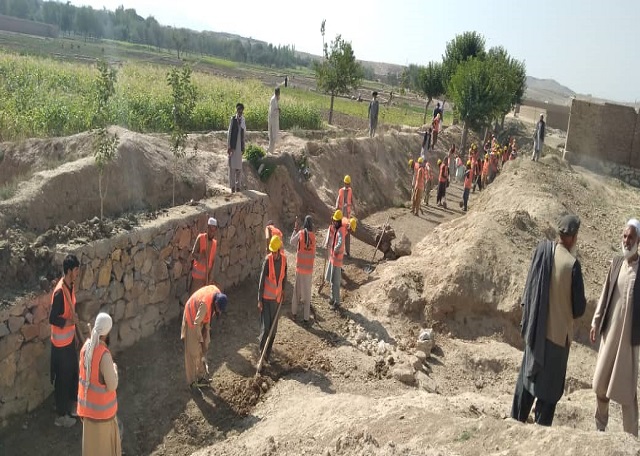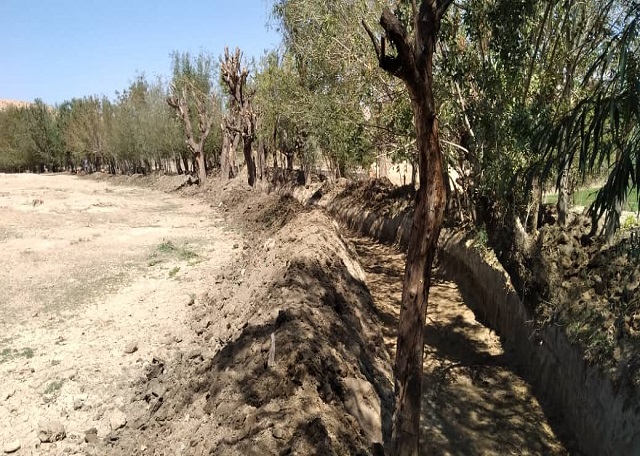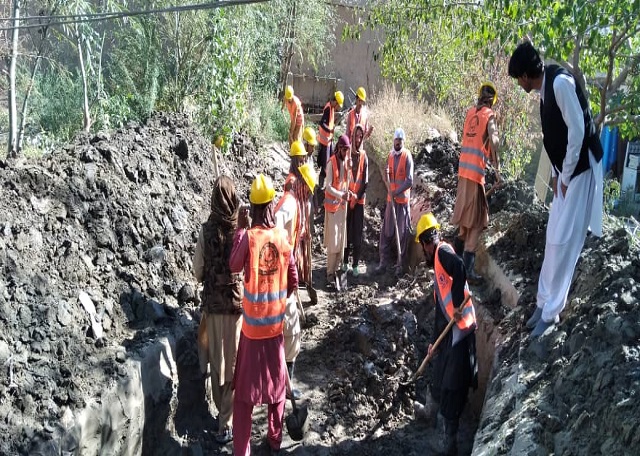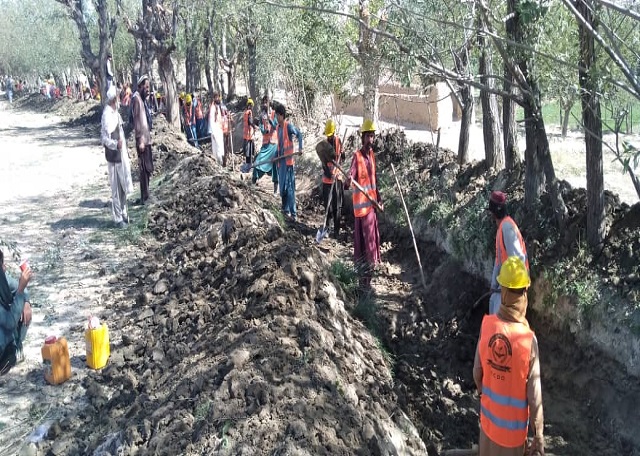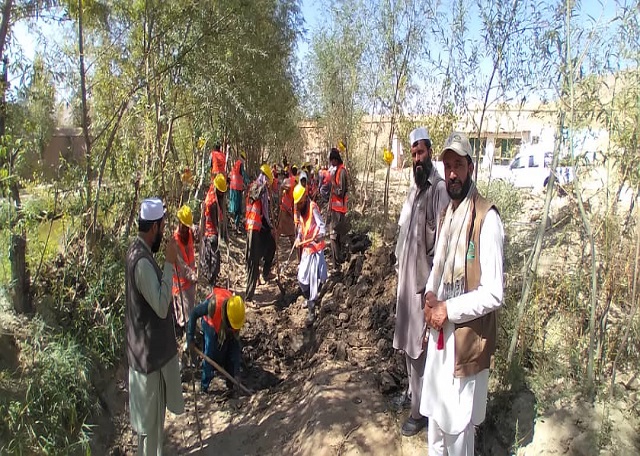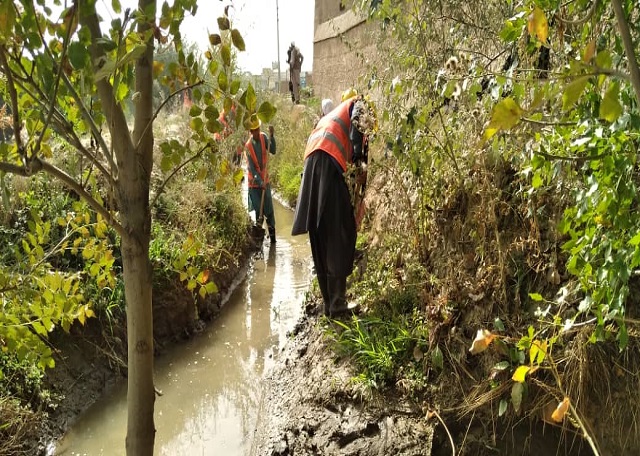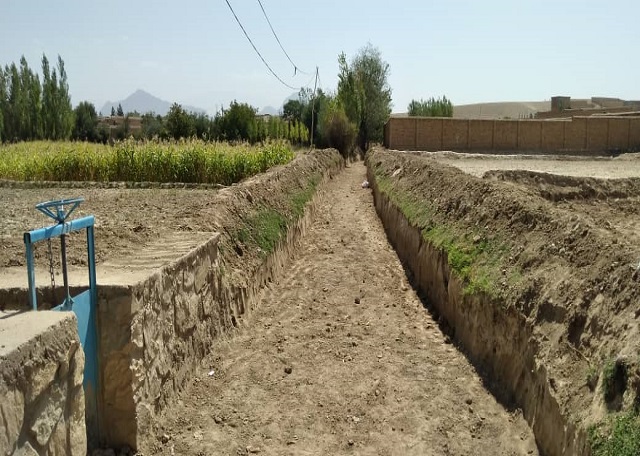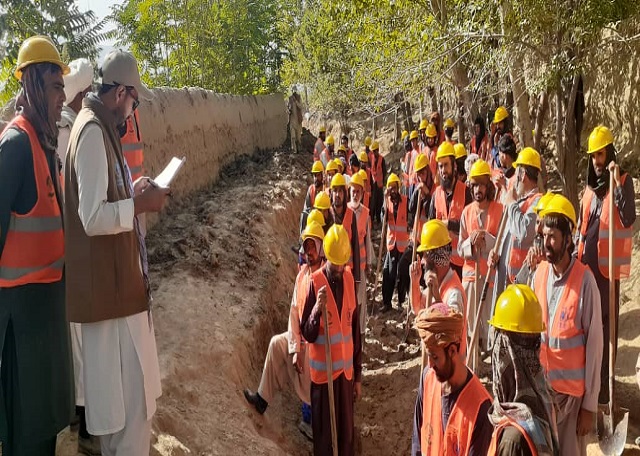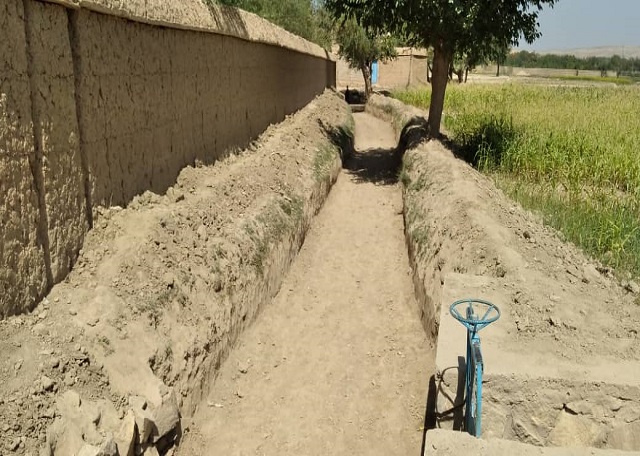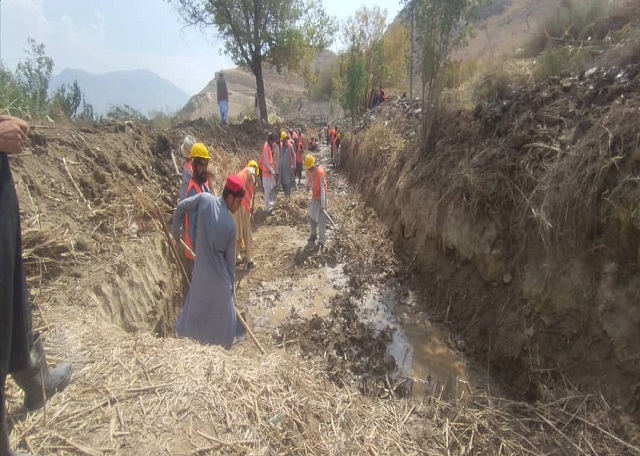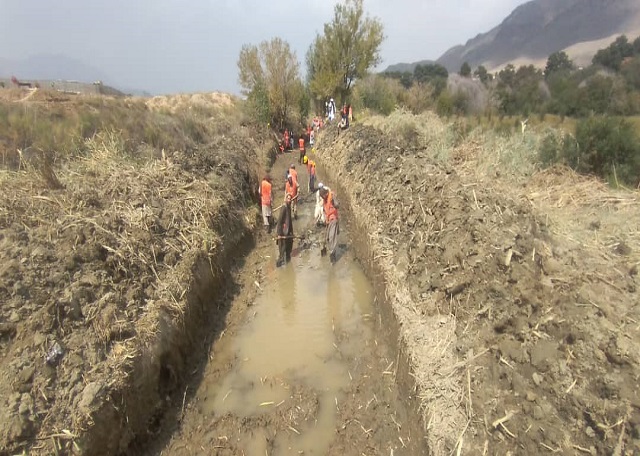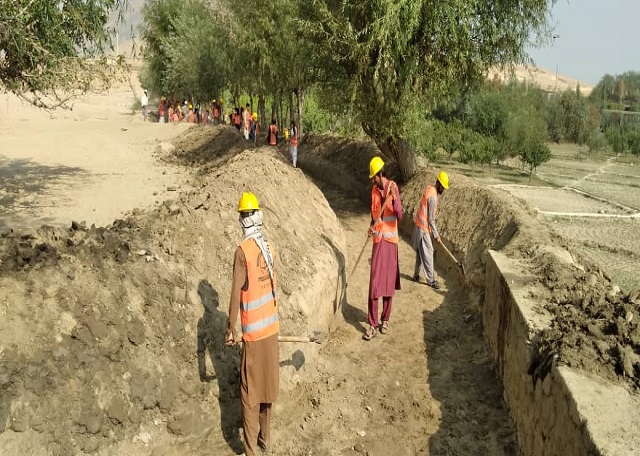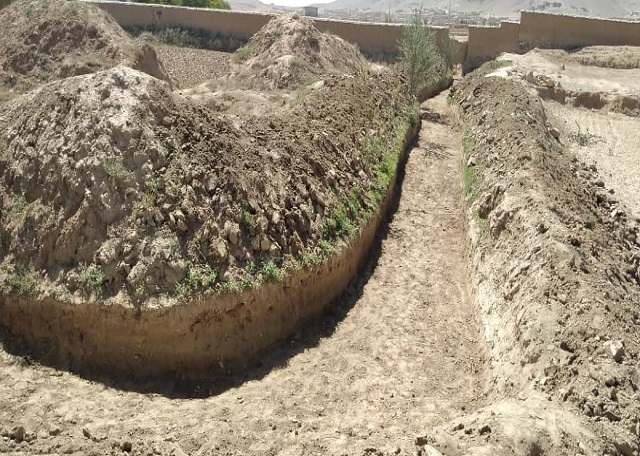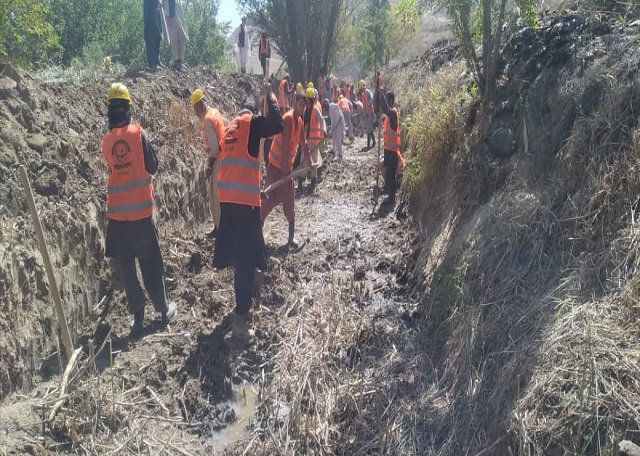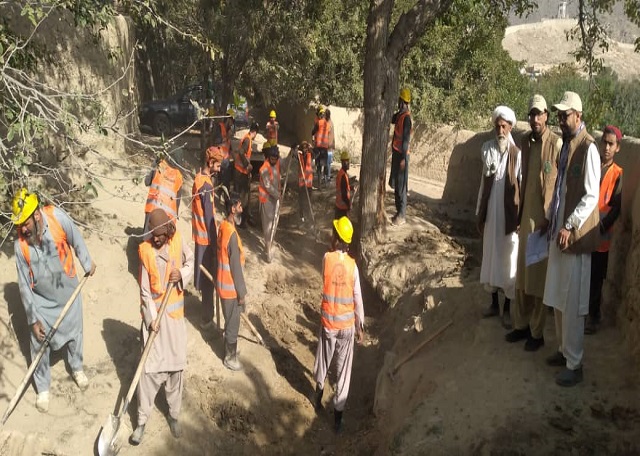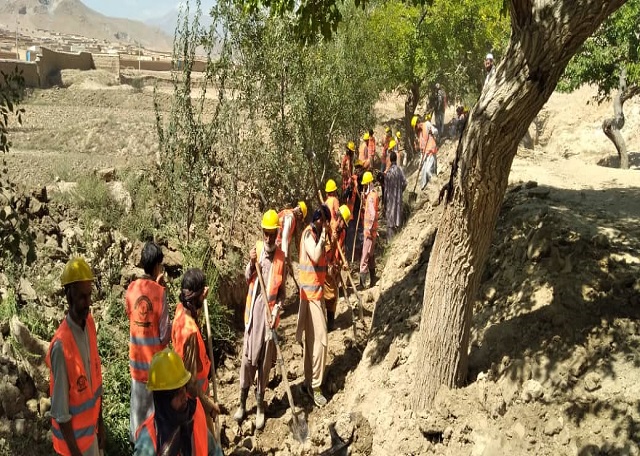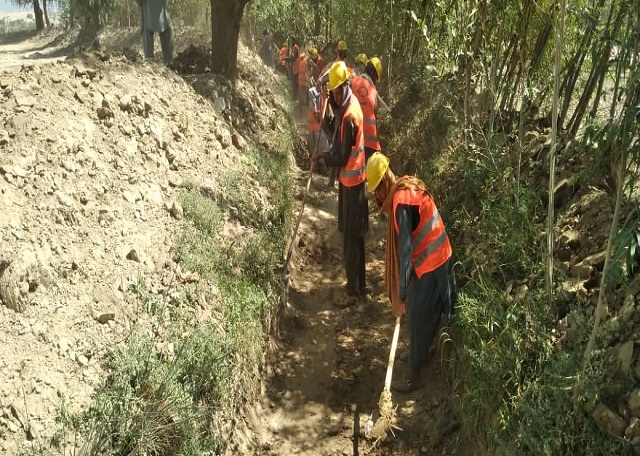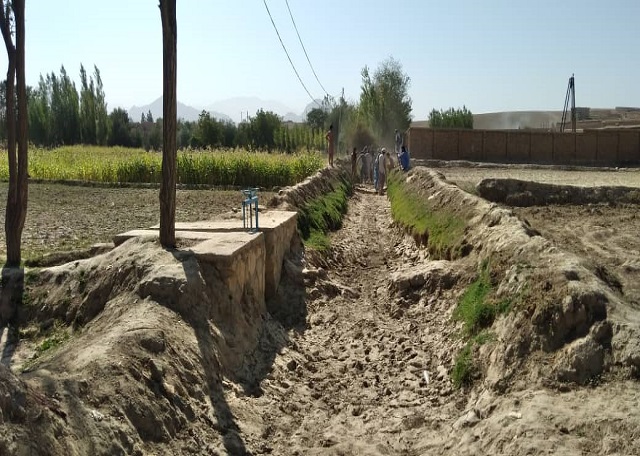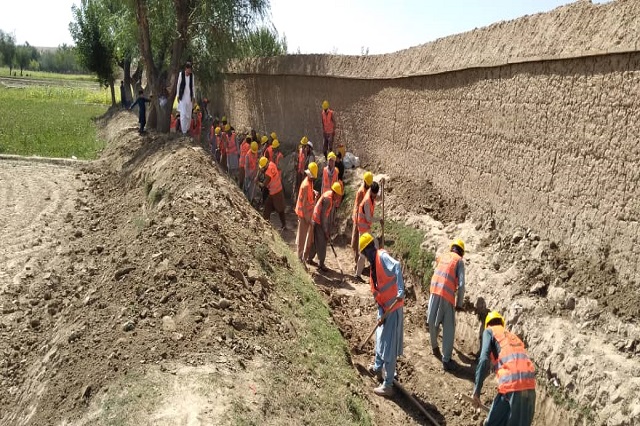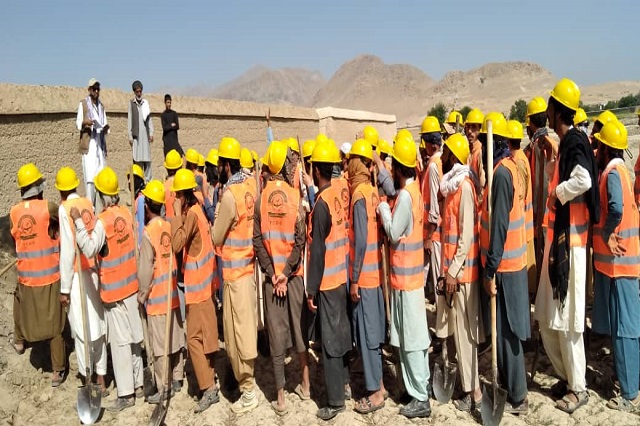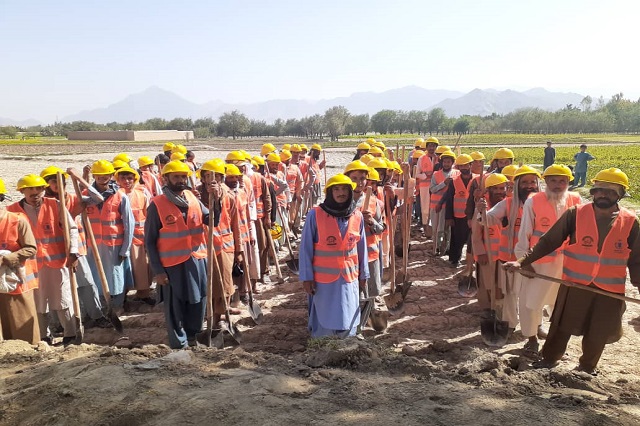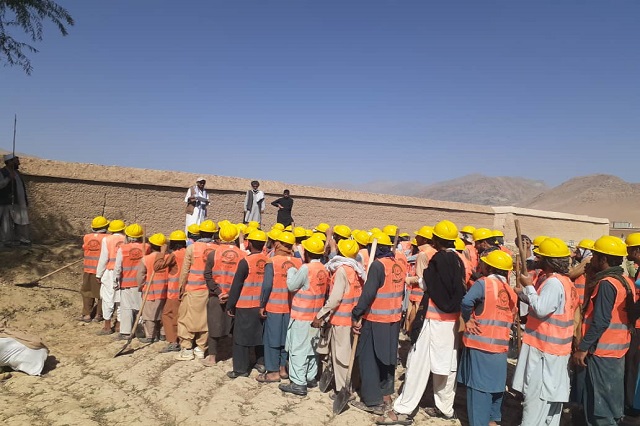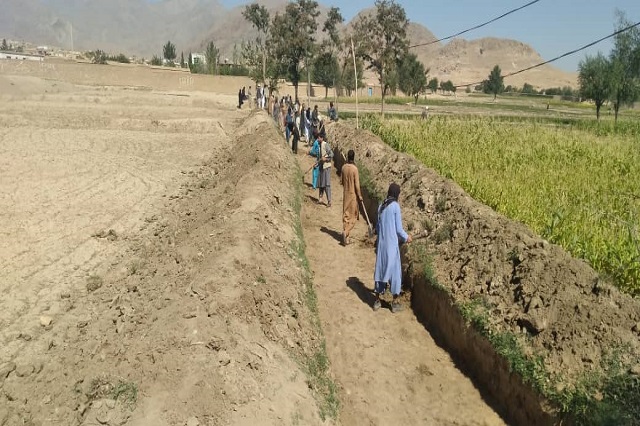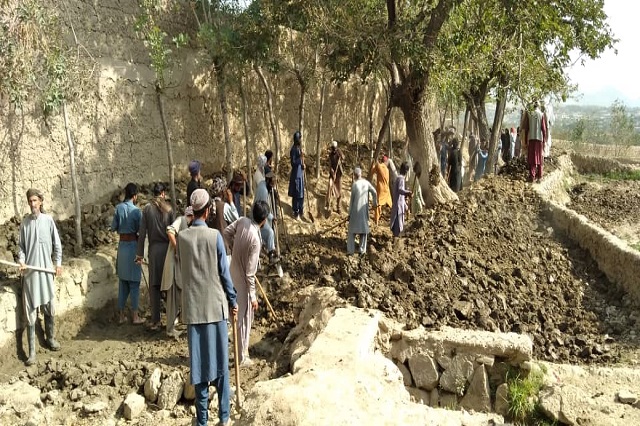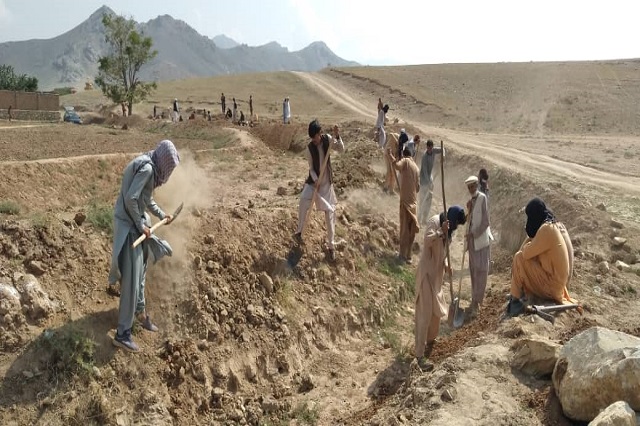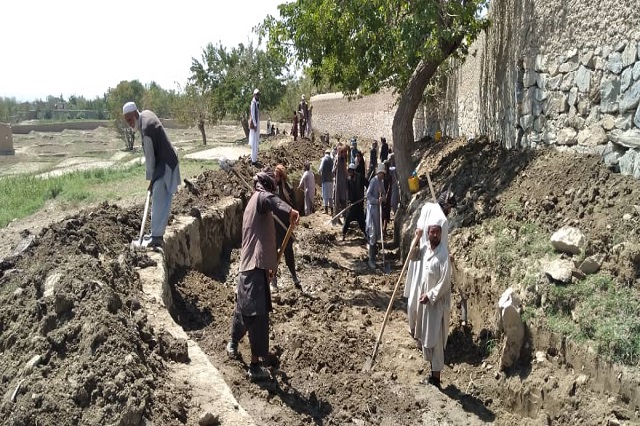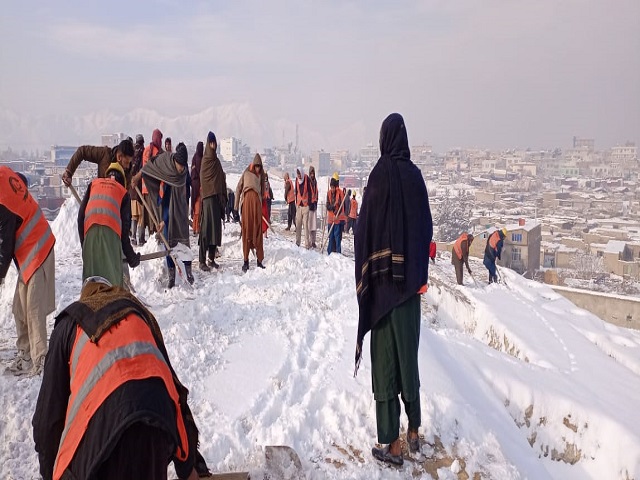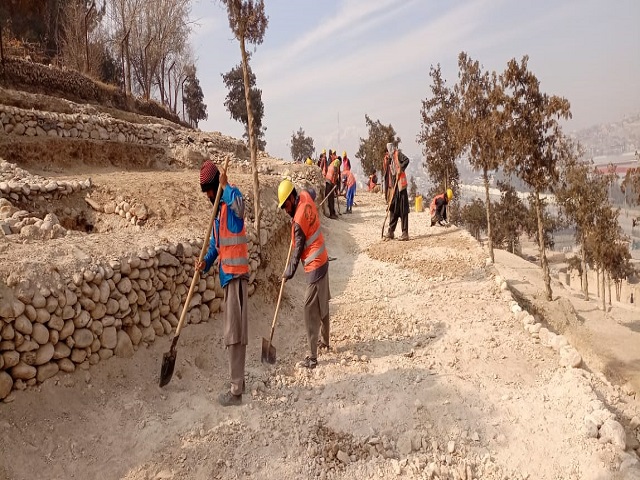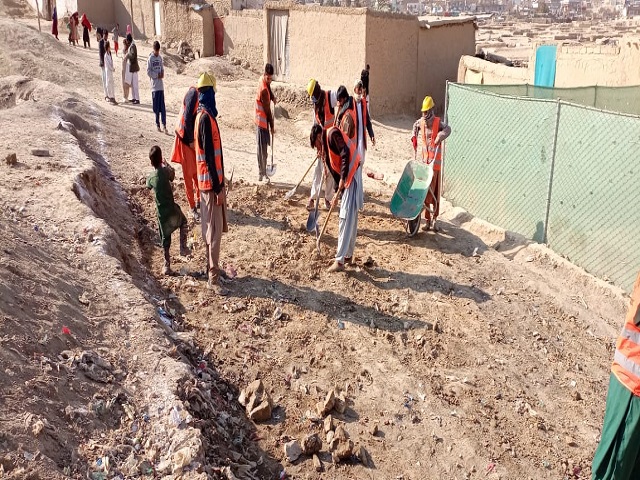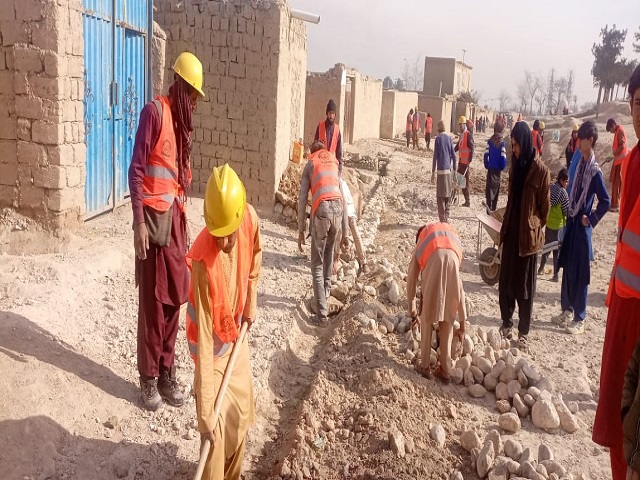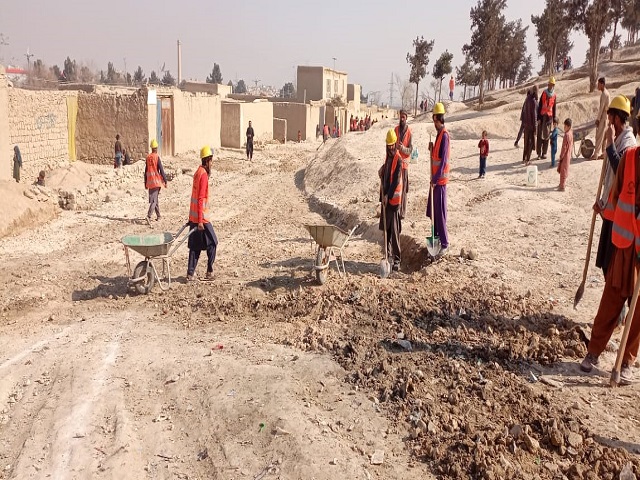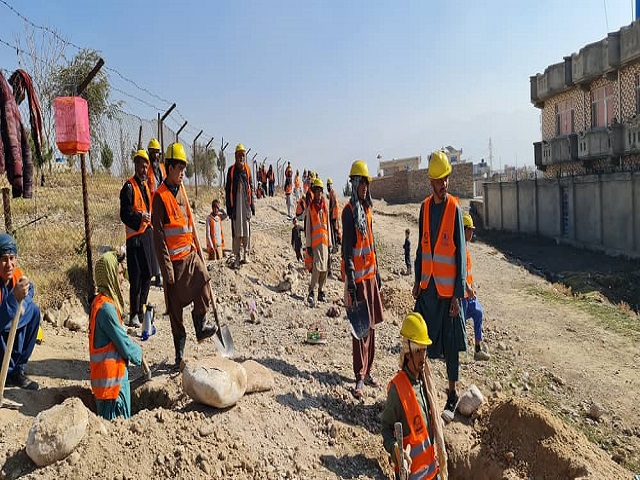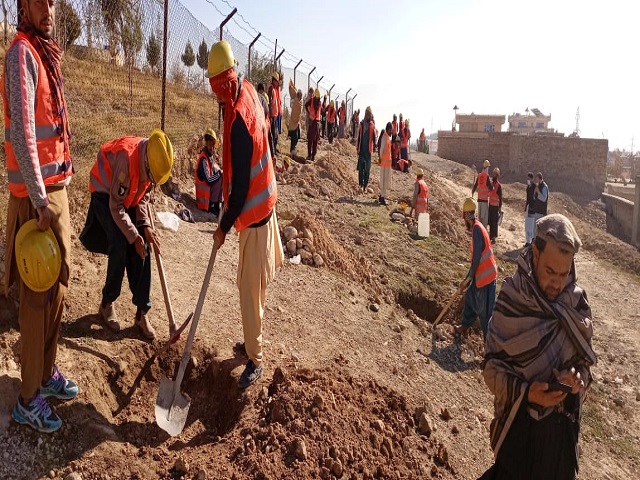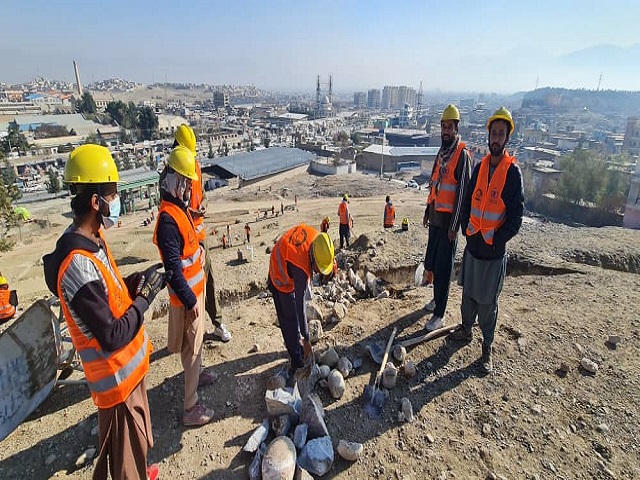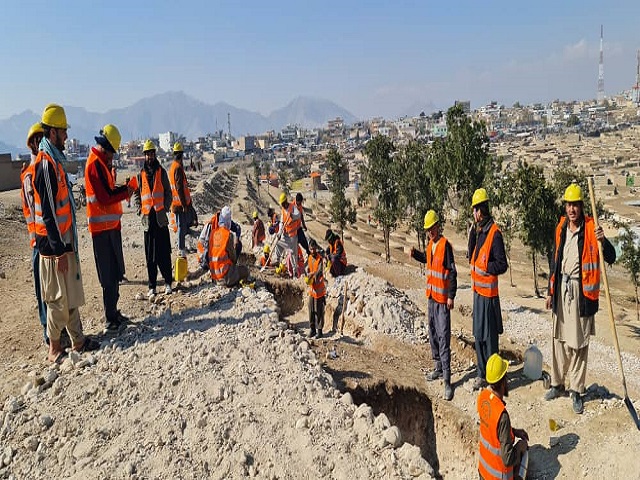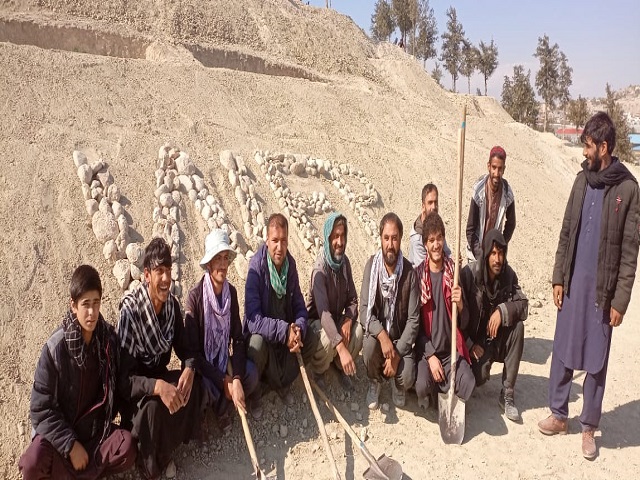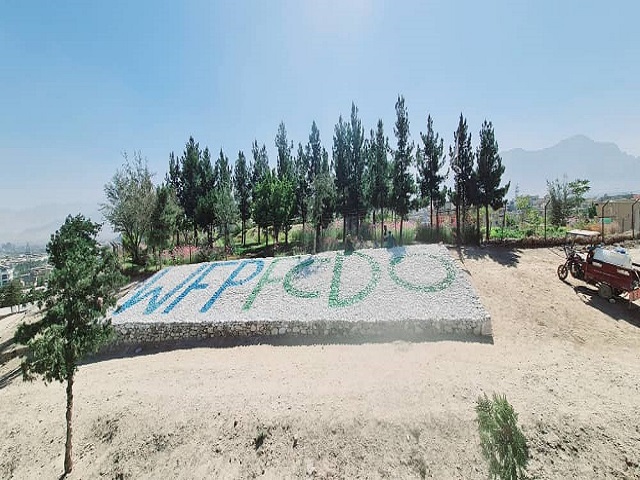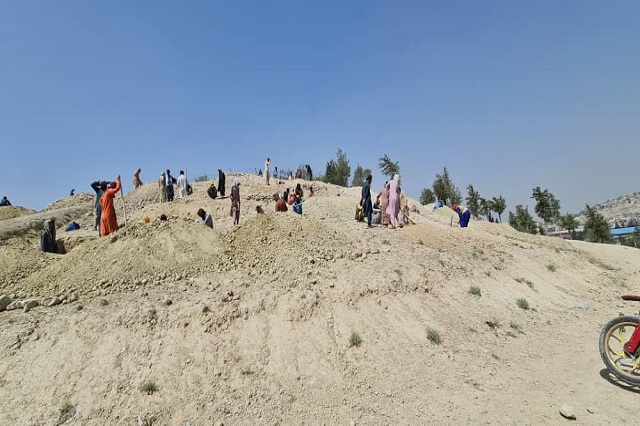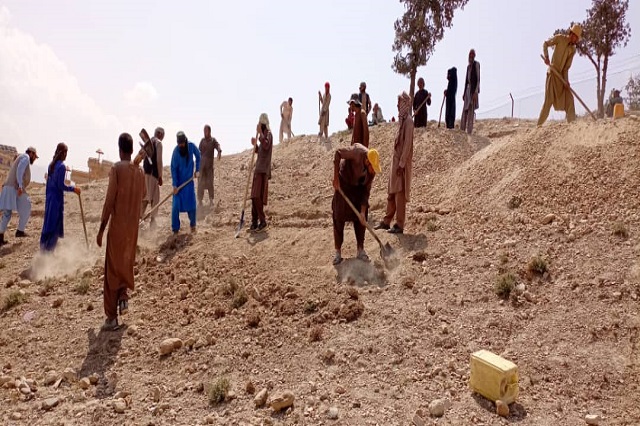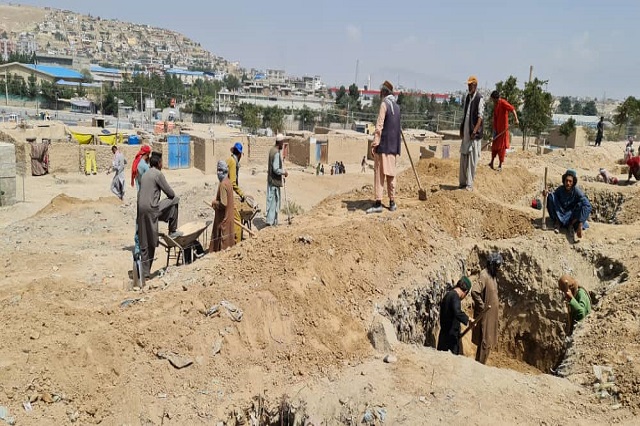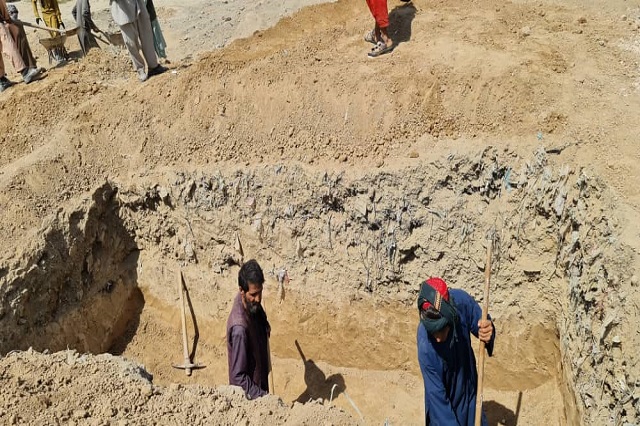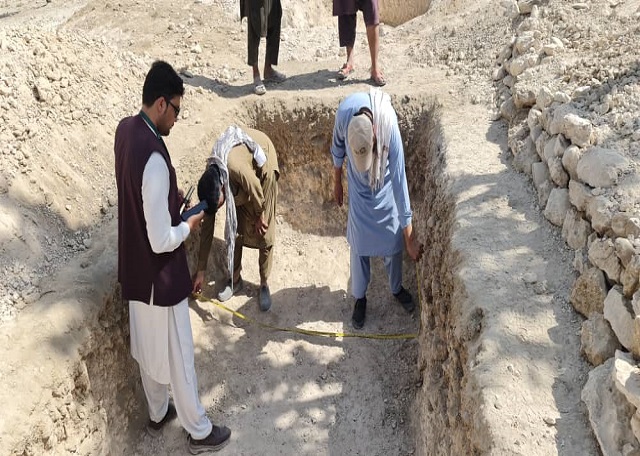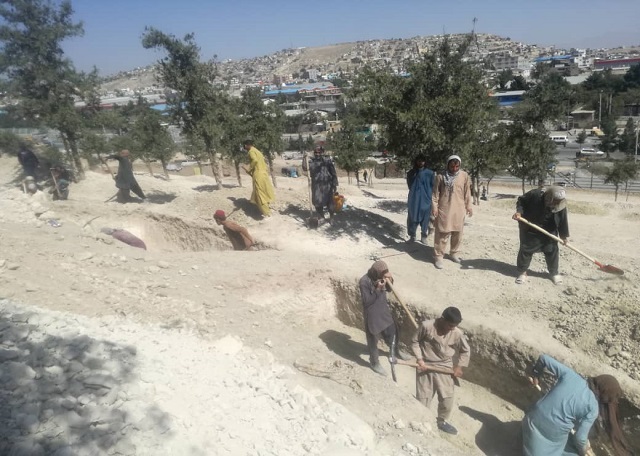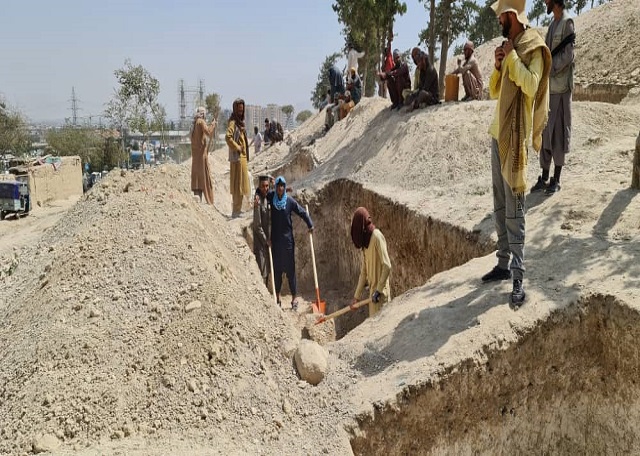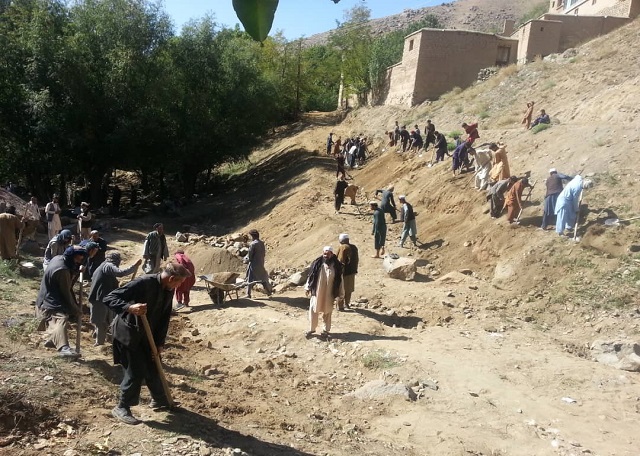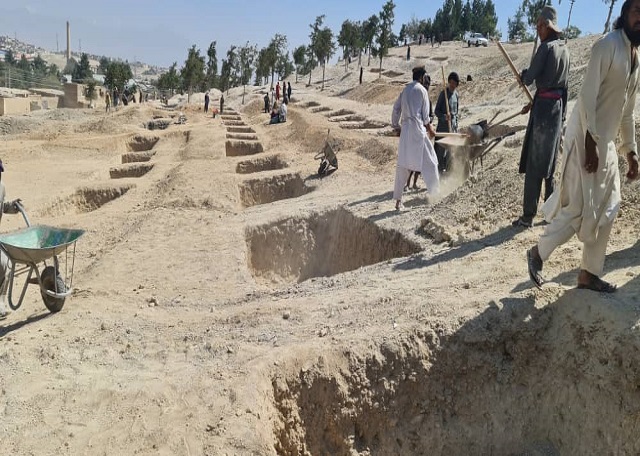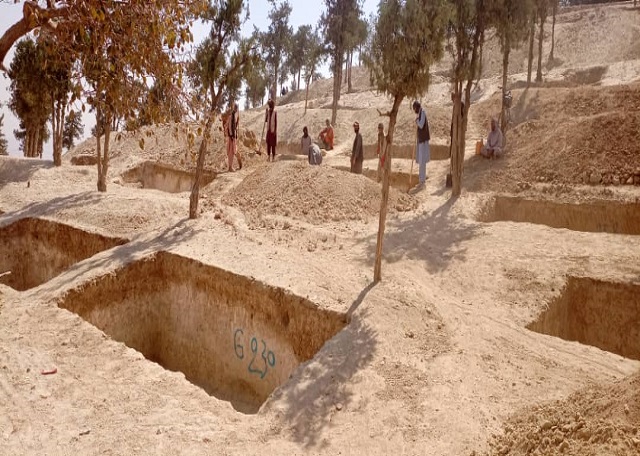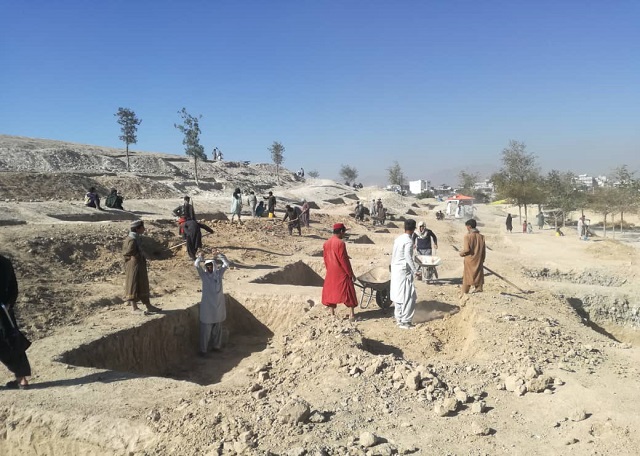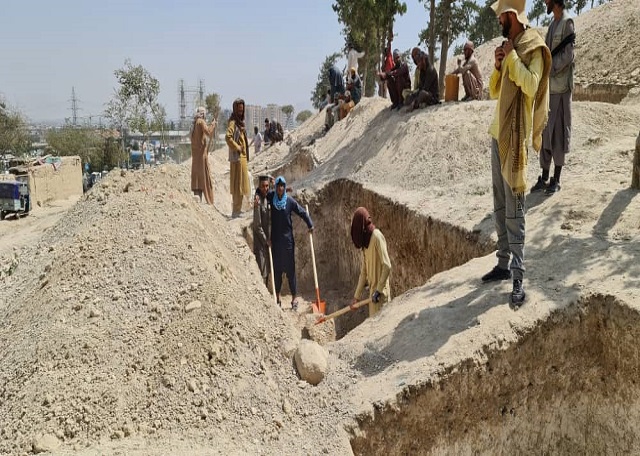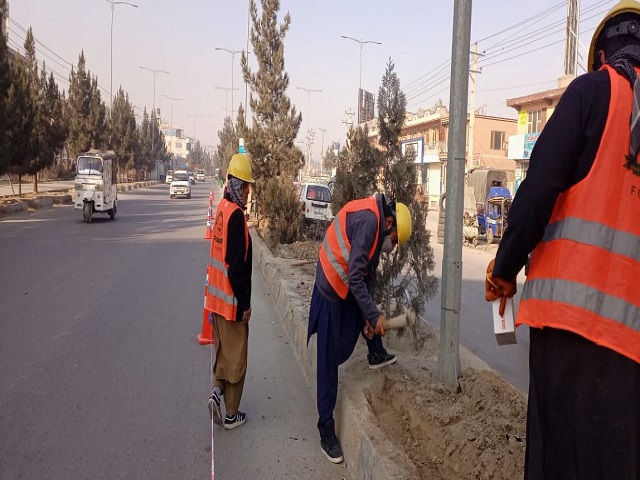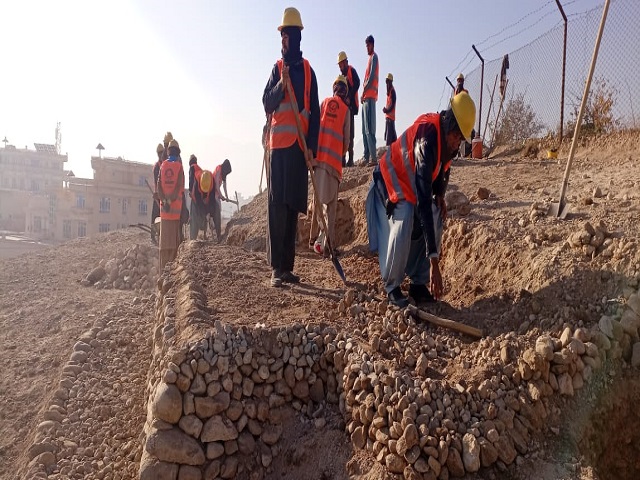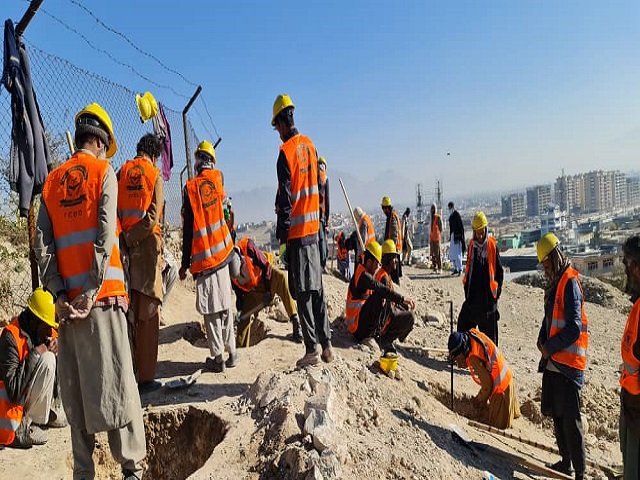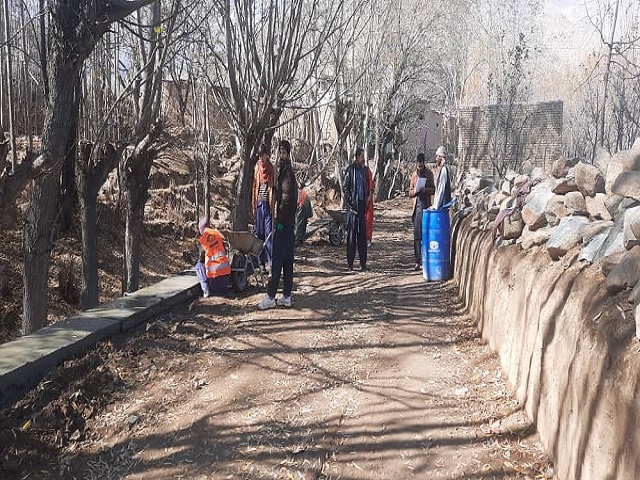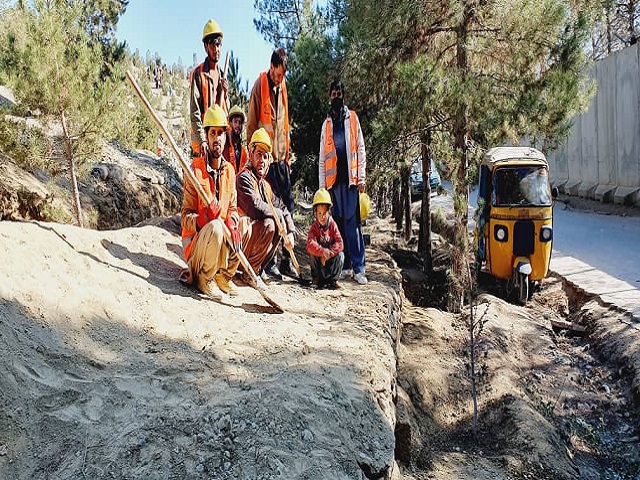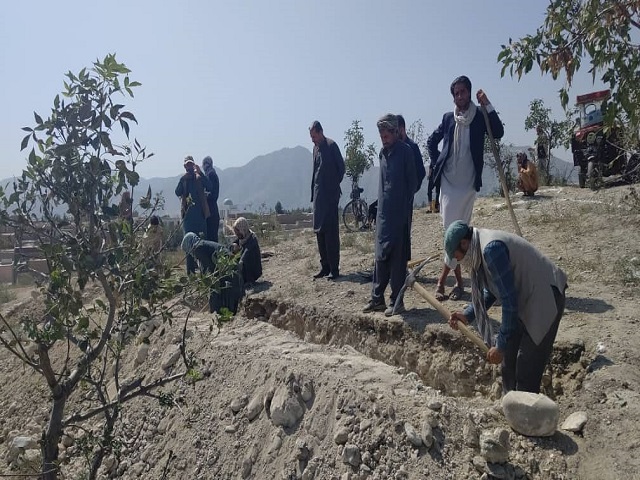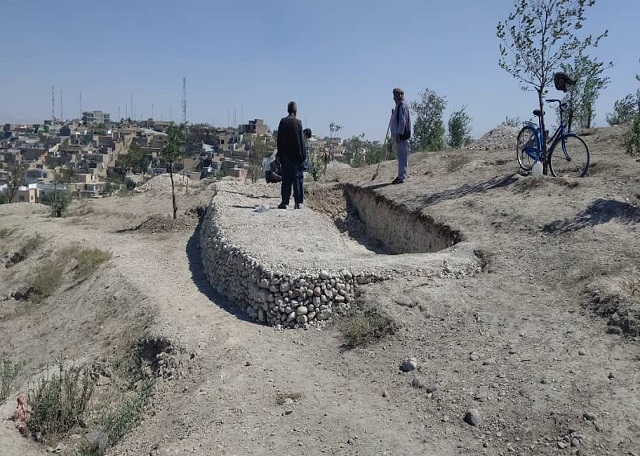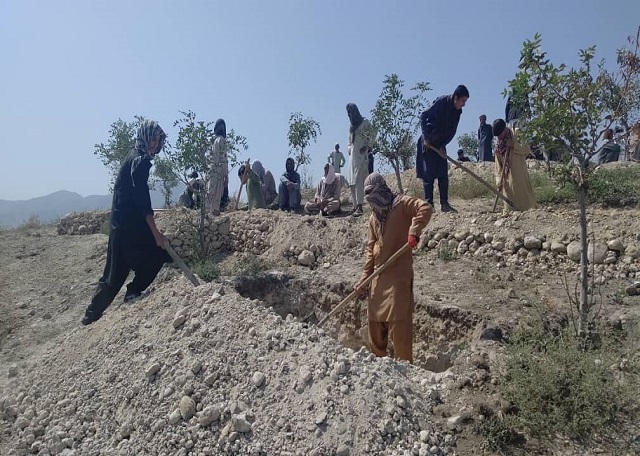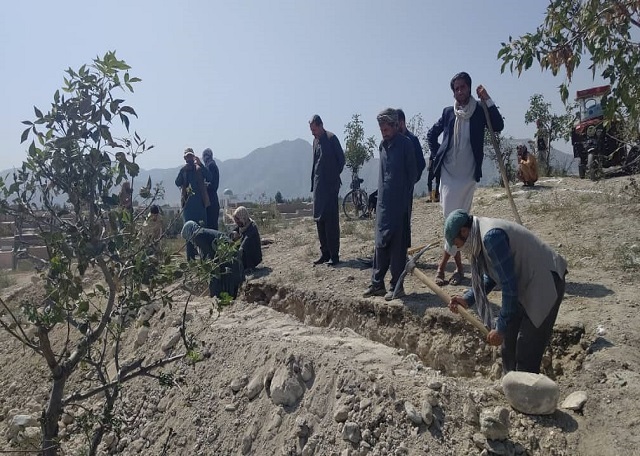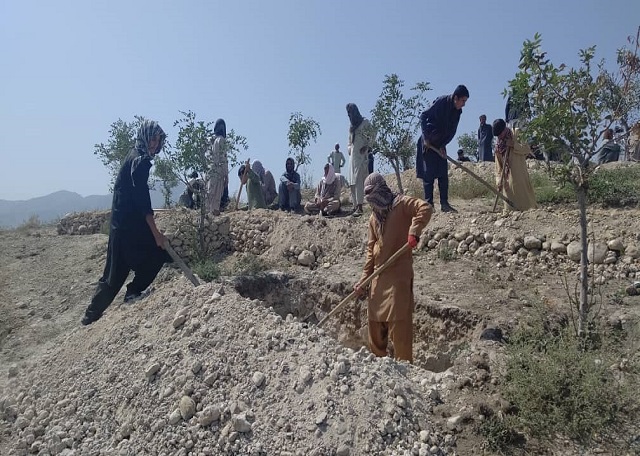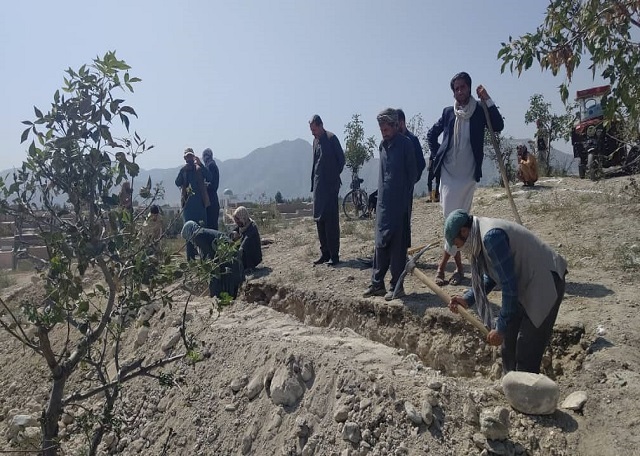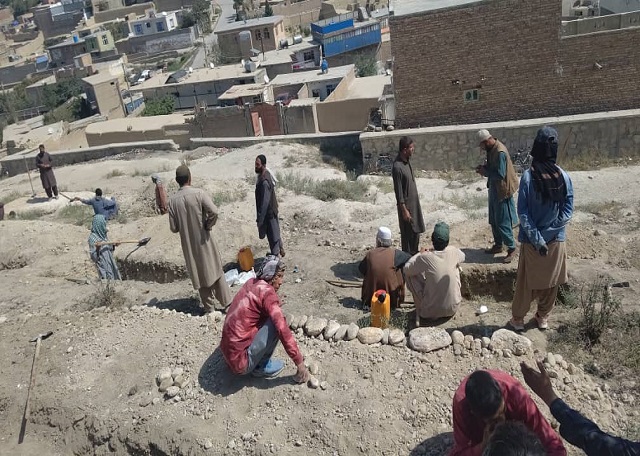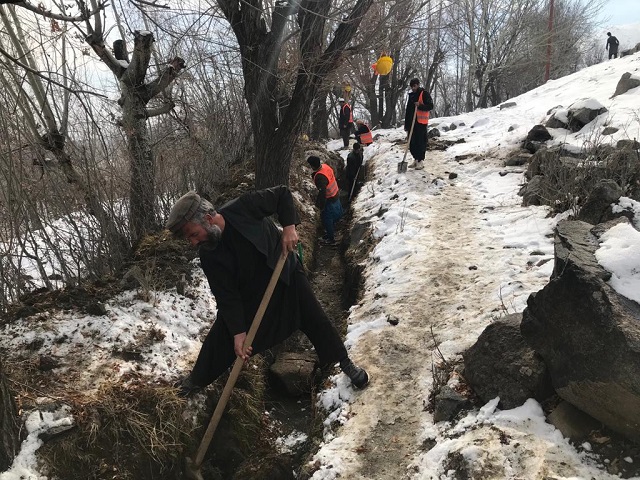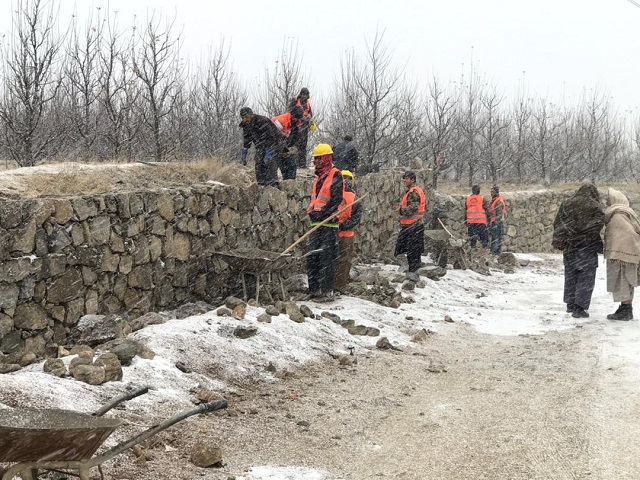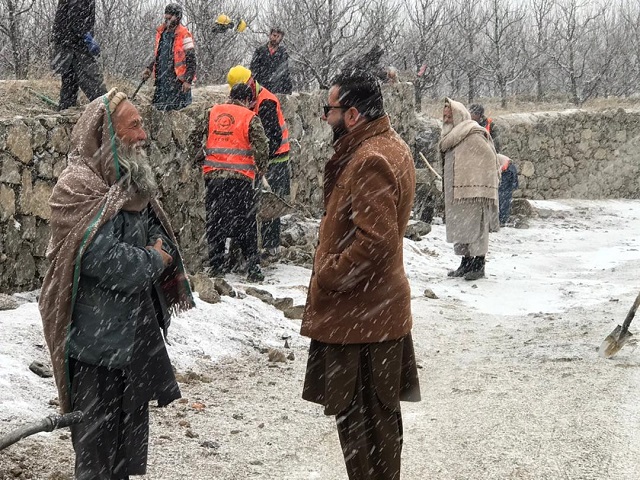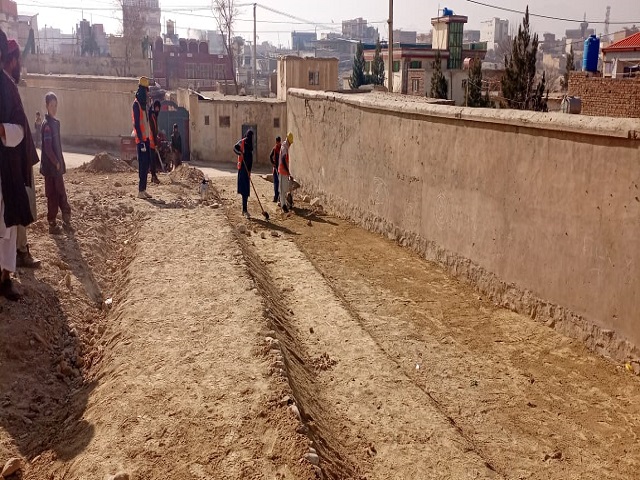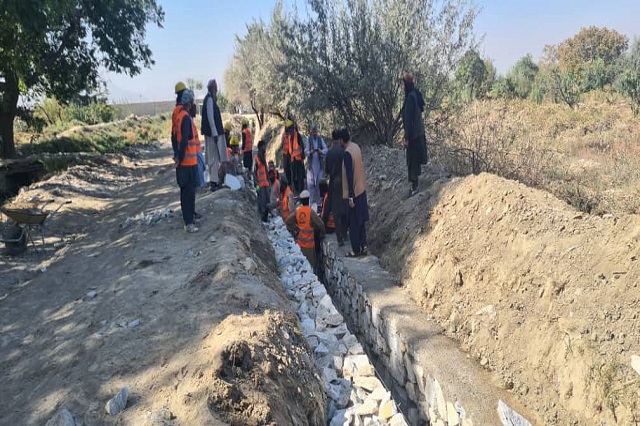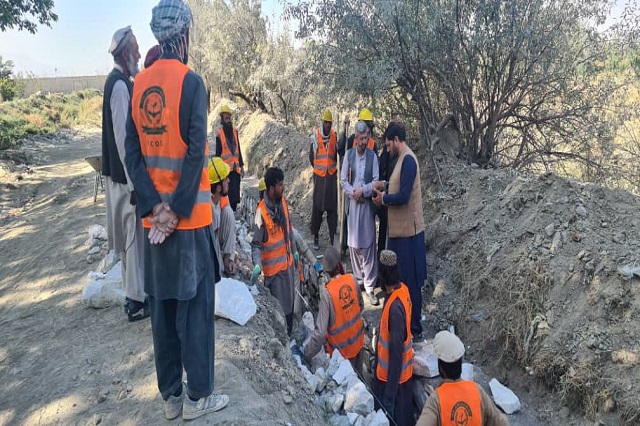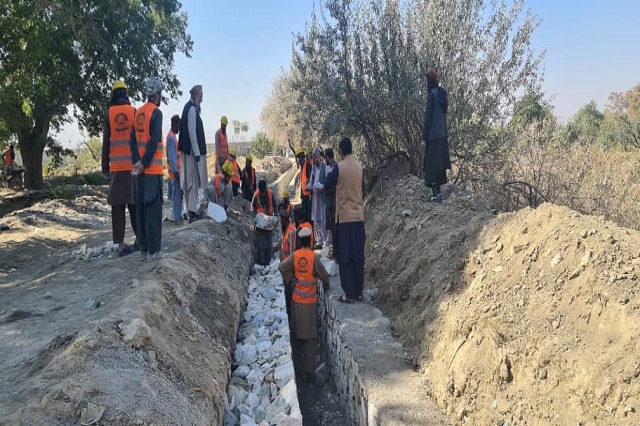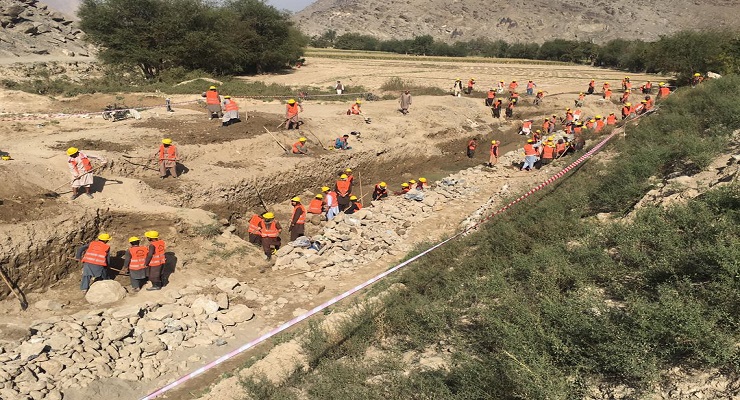
Implementation of RB Project in Baghrami District
Today, May 31, 2023, FCDO held opening ceremony concerning completion of 3 projects in Butkhak,Shiwaki,Wayar and Qala-e-Mosem villages of Bagrami district
FCDO were implemented the 3 projects construction of protection wall, irrigation canal and terraces in Bagrami district with the financial support of the World Food Programme(WFP).
Kabul Governor Mohammad Qasim Khalid, Deputy Minister of Rural Rehabilitation and Development Mr. Abdul Rahman Halim and representatives of the Ministry of Rural Rehabilitation and Development, Director of Rural Rehabilitation and Development of Kabul Province Mr. Mohammad Younus Hanafi, Representatives of Bagrami district, Local leaders, Representatives of the WFP, FCDO program manager Engineer Awal Khan Ahmadzai and the employees of the organization participated.
It should be noted that the agricultural irrigation canal,protective wall two projects have been implemented in the Shiwaki village of Bagrami district which is runs about 370 meters, the protective wall is runs about 494 meters and 4500 small terraces have been excavated in Butkhak, Qala-e-mosem and wayar villages.
3000 families in Bagrami district directly use this canal and protection wall projects and 4500 families indirectly. The mentioned canal irrigates 2250 hectares of residents' land and 8000 families use excavated terraces. Mentioned projects provided jobs from past nine months for 776 local beneficiaries
Today،May 2, 2023، German International Television Journalists and World Food Programme representatives visited the Shiwaki Canal project in Bagrami district, protection wall projects and distribution of agricultural equipment for vulnerable female families and kitchen gardening projects.
The program was attended by representatives of German international journalists,World Food Programme representatives, Eng. Awal Khan Ahmadzai ( Program manager) of FCDO and staff.
As a result، German TV journalists and representatives of the World Food Programme expressed their gratitude for the projects implemented with the financial support of the World Food Programme and the technical cooperation of the Friends Community Development Organization.
At the end of the program، the vulnerable female families involved in kitchen gardening project interviewed ، and they found their work positive، and they noticed that as an important source of economic growth for most vulnerable families.
FCDO conducted date (3/11/2023), Monitoring and evaluation done by Mr. Khalil Rahman Asad Director of FCDO in Bagrami (Shiwaki) RB project which supported by WFP. People express their happiness and more than 600 meters of canal and Protection wall are basically stoned. 370 meters canal irrigates 2250 hectares of land. 25,000 families use this canal direct and indirect and 15,000 families directly use this canal and (25-30) percent reduce water waste and have two percent sludge.
FCDO conducted date (14/11/2022), Monitoring and evaluation done by Mr. Khalil Rahman Asad Director of FCDO in Bagrami RB project. Main purpose of monitoring and evaluation to ensure the most effective and efficient use of resources, evaluate the extent to which the programme /project is having or has had the desired impact. Monitoring means the key elements of program performance on a regular basis (inputs, activities, results)
On 9/1/2022, FCDO started the RB (Resilience Building) Project in Butkhak,Shiwaki,Wayar and Mosem Kala areas of Baghrami district.This project includes the construction of terraces in Butkhak and Construction of canal,protection wall in Shiwaki area.
The aim of this project is creation of public assets and provision of jobs for local beneficiaries. It has provided jobs for 2000 men for 9 months, which is a positive step in fighting against poverty in Afghanistan.
Baghrami irrigation canal runs about 370 meters long and irrigates 3000 hectares of land.
Baghrami Shiwaki village protection wall runs about 427 meters long.
Baghrami canal cleaning runs about 5500 meters long.
Duration: 9 months
Number of Participants : 281
Number of beneficiaries: 1967
Terracing as a Best Management Practice
For Controlling Erosion and Protecting Water Quality
Terracing is an important measure to raise grain yield, to prevent soil erosion, to preserve soil fertility, and to maintain long-term stable production. Bench terrace is the basic type of farmland in mountains. A bench terrace with its level platform and projected or ridged rim may hold rainwater for irrigation.
What is terracing?
Terracing is a soil conservation practice applied to prevent rainfall runoff on sloping land from accumulating and causing serious erosion. Terraces consist of ridges and channels constructed across-the-slope.
What types of terraces are there, and how do they differ?
To some people, the word 'terrace' brings to mind bench terraces that are used in various mountainous regions of the world. More often, one pictures contour terraces, with their point rows and grassed waterway outlets that follow the lay-of- the-land.
What are the benefits of a terrace system?
The major benefit, of course, is the conservation of soil and water. Terraces reduce both the amount and velocity of water moving across the soil surface, which greatly reduces soil erosion. Terracing thus permits more intensive cropping than would otherwise be possible.
PTO terraces provide these added benefits: (1) the total area can be farmed, since grassed waterways are not needed; (2) elimination of grassed 'waterways also eliminates the inconvenience they cause when tilling or applying herbicides; (3) peak discharges are reduced because runoff is temporarily stored; and (4) sediment and other contaminants settle out behind the terrace ridge before polluting water in a receiving stream.
How effective are terraces in controlling erosion?
Generally, very effective! They intercept rainfall runoff as it starts down a slope, thus preventing a large accumulation of flow on the surface. This reduces the potential for sheet and rill erosion.
In effect, terraces break up one long slope into a number of short ones. As already mentioned, PTO terraces also give soil particles that do erode a chance to settle out in the basin behi1d the terrace ridge, while the excess water is slowly discharged through a subsurface drain.
The rehabilitation project paved the canal, reducing water wastage and maintenance. Rehabilitation also added turnouts and metal gates that make it easy to channel water to different parcels of farmland, eliminating the need to manage the flow manually by placing mud at the ends of the canal.
With funding from the WFP (World Food Programme) administered by the FCDO (Friends Community Development Organization), FCDO works to improve agricultural productivity in project areas by enhancing the efficiency of water use. The project aims to support on-farm water management investments in five regions.
"The project has boosted the productivity of local farmers in the village. In the long run, it will reduce poverty and increase the quality of living conditions for many."
Gallery
Photos are related to Baghrami RB project

Implementation of RB Project in Char Asiab district
Today, may 4, 2023, FCDO held opening ceremony concerning construction of two canals in Chahar Asiab district completed and ready to use
FCDO started the RB (Resilience Building) Project from past nine months in Elyaskhil and Childokhtaran areas of Char Asiab district. This project included the construction of canals in Elyaskhil and Childokhtaran areas.
The aim of this project is creation of public assets and provision of jobs for local beneficiaries. It has provided jobs for 137 men from past 9 months, which is a positive step in fighting against poverty in Afghanistan.
Char Asiab irrigation canals irrigates 3700 hectares of land which 1750 families directly use this canal.
Char Asiab Elyaskhil village irrigation canal runs about 100 meters and Childokhtaran village irrigation canal runs about 410 meters.
Our Engineers active involvement in the project and the extra effort and hard work they put into the project helped us complete the project as per schedule.
On (28/11/2022), The visit to the Construction site was conducted by Mr. Awal Khan Ahmadzai (Program Manager) in Char Asiab RB project. Main purpose of this monitoring and evaluation to ensure the most effective and efficient use of resources especially those that focus on Health & Safety, Contract Implementation and Risk Assessment & Mitigation.
On 9/1/2022, FCDO started the RB (Resilience Building) Project in Elyaskhil and Childokhtaran areas of Char Asiab district. This project includes the construction of canal in Elyaskhil,Childokhtaran areas and construction of protection wall.
The aim of this project is creation of public assets and provision of jobs for local beneficiaries. It has provided jobs for 2000 men for 9 months, which is a positive step in fighting against poverty in Afghanistan.
Char Asiab irrigation canal runs about 350 meters long and irrigates 3000 hectares of land.
Char Asiab Elyaskhil village irrigation canal runs about 100 meters and Childokhtaran village irrigation canal runs about 250 meters.
The rehabilitation project paved the canal, reducing water wastage and maintenance. Rehabilitation also added turnouts and metal gates that make it easy to channel water to different parcels of farmland, eliminating the need to manage the flow manually by placing mud at the ends of the canal.
With funding from the WFP (World Food Programme) administered by the FCDO (Friends Community Development Organization), FCDO works to improve agricultural productivity in project areas by enhancing the efficiency of water use. The project aims to support on-farm water management investments in five regions.
Protection wall used in road construction and flood protection embankment
The benefit of protection wall includes flood prevention, erosion control, and much more.
Benefit 1: Retaining Wall Prevents Damage to the Nearby Structures
Benefit 2: Retaining Wall Helps to Resist Gravity Load
Benefit 3: Retaining Wall Prevents Erosion
Benefit 4: Retaining Wall Controls Flooding
Benefit 5: Retaining Wall Helps in Diverting and Utilizing Rainwater
Benefit 6: Retaining Wall Helps in Reshaping Slopes
Benefit 7: Retaining Wall Benefits to Prevent Sink Holes
Gallery
Photos are related to Char Asiab RB project

Implementation of RB Project in district 8
On 9/1/2022, FCDO started the RB (Resilience Building) Project in district 8.This project includes the construction of terraces in district 8.
The aim of this project is creation of public assets and provision of jobs for local beneficiaries. It has provided jobs for 2000 men for 9 months, which is a positive step in fighting against poverty in Afghanistan.
Terracing as a Best Management Practice
For Controlling Erosion and Protecting Water Quality
Terracing is an important measure to raise grain yield, to prevent soil erosion, to preserve soil fertility, and to maintain long-term stable production. Bench terrace is the basic type of farmland in mountains. A bench terrace with its level platform and projected or ridged rim may hold rainwater for irrigation.
What is terracing?
Terracing is a soil conservation practice applied to prevent rainfall runoff on sloping land from accumulating and causing serious erosion. Terraces consist of ridges and channels constructed across-the-slope.
What types of terraces are there, and how do they differ?
To some people, the word 'terrace' brings to mind bench terraces that are used in various mountainous regions of the world. More often, one pictures contour terraces, with their point rows and grassed waterway outlets that follow the lay-of- the-land.
What are the benefits of a terrace system?
The major benefit, of course, is the conservation of soil and water. Terraces reduce both the amount and velocity of water moving across the soil surface, which greatly reduces soil erosion. Terracing thus permits more intensive cropping than would otherwise be possible.
PTO terraces provide these added benefits: (1) the total area can be farmed, since grassed waterways are not needed; (2) elimination of grassed 'waterways also eliminates the inconvenience they cause when tilling or applying herbicides; (3) peak discharges are reduced because runoff is temporarily stored; and (4) sediment and other contaminants settle out behind the terrace ridge before polluting water in a receiving stream.
How effective are terraces in controlling erosion?
Generally, very effective! They intercept rainfall runoff as it starts down a slope, thus preventing a large accumulation of flow on the surface. This reduces the potential for sheet and rill erosion.
In effect, terraces break up one long slope into a number of short ones. As already mentioned, PTO terraces also give soil particles that do erode a chance to settle out in the basin behi1d the terrace ridge, while the excess water is slowly discharged through a subsurface drain.
"The project has boosted the productivity of local farmers in the village. In the long run, it will reduce poverty and increase the quality of living conditions for many."
Gallery
Photos are related to District 8 .
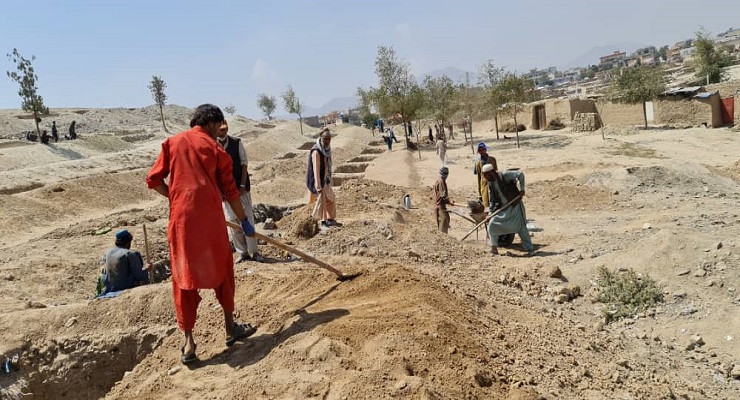
Implementation of RB Project in district 16
On 9/1/2022, FCDO started the RB (Resilience Building) Project in district 16.This project includes the construction of terraces in district 16.
The aim of this project is creation of public assets and provision of jobs for local beneficiaries. It has provided jobs for 2000 men for 9 months, which is a positive step in fighting against poverty in Afghanistan.
Terracing as a Best Management Practice
For Controlling Erosion and Protecting Water Quality
Terracing is an important measure to raise grain yield, to prevent soil erosion, to preserve soil fertility, and to maintain long-term stable production. Bench terrace is the basic type of farmland in mountains. A bench terrace with its level platform and projected or ridged rim may hold rainwater for irrigation.
What is terracing?
Terracing is a soil conservation practice applied to prevent rainfall runoff on sloping land from accumulating and causing serious erosion. Terraces consist of ridges and channels constructed across-the-slope.
What types of terraces are there, and how do they differ?
To some people, the word 'terrace' brings to mind bench terraces that are used in various mountainous regions of the world. More often, one pictures contour terraces, with their point rows and grassed waterway outlets that follow the lay-of- the-land.
What are the benefits of a terrace system?
The major benefit, of course, is the conservation of soil and water. Terraces reduce both the amount and velocity of water moving across the soil surface, which greatly reduces soil erosion. Terracing thus permits more intensive cropping than would otherwise be possible.
PTO terraces provide these added benefits: (1) the total area can be farmed, since grassed waterways are not needed; (2) elimination of grassed 'waterways also eliminates the inconvenience they cause when tilling or applying herbicides; (3) peak discharges are reduced because runoff is temporarily stored; and (4) sediment and other contaminants settle out behind the terrace ridge before polluting water in a receiving stream.
How effective are terraces in controlling erosion?
Generally, very effective! They intercept rainfall runoff as it starts down a slope, thus preventing a large accumulation of flow on the surface. This reduces the potential for sheet and rill erosion.
In effect, terraces break up one long slope into a number of short ones. As already mentioned, PTO terraces also give soil particles that do erode a chance to settle out in the basin behi1d the terrace ridge, while the excess water is slowly discharged through a subsurface drain.
"The project has boosted the productivity of local farmers in the village. In the long run, it will reduce poverty and increase the quality of living conditions for many."
Gallery
Photos are related to District 16 RB project
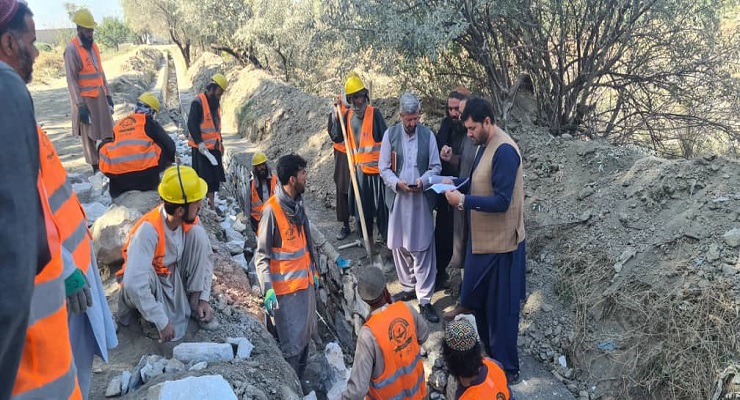
Implementation of RB Project in District 18
On 9/1/2022, FCDO started the RB (Resilience Building) Project in district 18. This project include the construction of protection wall. The aim of this project is creation of public assets and provision of jobs for local beneficiaries. It has provided jobs for 2000 men for 9 months, which is a positive step in fighting against poverty in Afghanistan.
Protection wall used in road construction and flood protection embankment the benefit of protection wall includes flood prevention, erosion control, and much more.
Benefit 1: Protection Wall Prevents Damage to the Nearby Structures
Benefit 2: Protection Wall Helps to Resist Gravity Load
Benefit 3: Protection Wall Prevents Erosion
Benefit 4: Protection Wall Controls Flooding
Benefit 5: Protection Wall Helps in Diverting and Utilizing Rainwater
Benefit 6: Protection Wall Helps in Reshaping Slopes
Benefit 7: Protection Wall Benefits to Prevent Sink Holes
Protecting Walls From Damage
Every establishment must make wall protection a necessity, whether they have a busy environment or not. For a building to last and stay standing for a long time, you must protect the walls from the scrapes and knocks or more serious dents and holes that could form on the walls as time goes by.
Although there’s nothing you can do about trip-ups and accidents that could cause damage to your walls, you can still protect the building by installing a wall protection system. Prevention is certainly better than cure! With a long-term solution such as wall protection, you won’t worry as much about maintenance, cleaning, and repairs.
Some of the many benefits of wall protection include:
1. Minimizing Wall Damage
You can’t help it; the walls of your establishment will suffer from wear and tear over time. However, with a protective wall system, you can significantly decrease the chances of severe damage caused by heavy equipment and other objects.
Protective reinforcement such as bump rails, wall protection sheeting, and corner guards can prevent damage in high traffic areas, ensuring that there would be as little depreciation caused by pedestrian movement and scrapes from small objects. With a reliable wall protection system, you can improve the longevity of your walls!
2. Improve Safety
Safety must be your number one priority—it helps reduce the risk of work-related injuries and accidents, guaranteeing that the establishment is a secure environment to be in. Your wall protection isn’t just for the longevity of your walls; they’re for the sake of the public’s safety, too!
To minimize accidents in steep or slippery areas, we recommend using handrails as a safety precaution. You can also increase visibility in some areas by installing illuminated hand and bump rails.
3. Reduce Costs
Wall protection adds to your expenses, but when you think about all of the dents and blemishes in the walls you’ll have to take care of in the coming years, bumper rails, wall sheets, and corner guards sound like a cost-effective solution to long-term problems.
If you want to avoid the costly expenses of wall damage, we recommend investing in wall protection. With high-quality, durable wall protection, you won’t have to worry about accidents and wear and tear as much.
Conclusion
No establishment must operate without having wall protection installed first! Wall protection may not contribute to the aesthetics of your interior, but they have just as much significance as the floor plan of your building. With a safe and functional environment, you’re sure to be able to fulfill your duties and serve the people for the years to come!
Gallery
Photos are related to District 18 RB project

